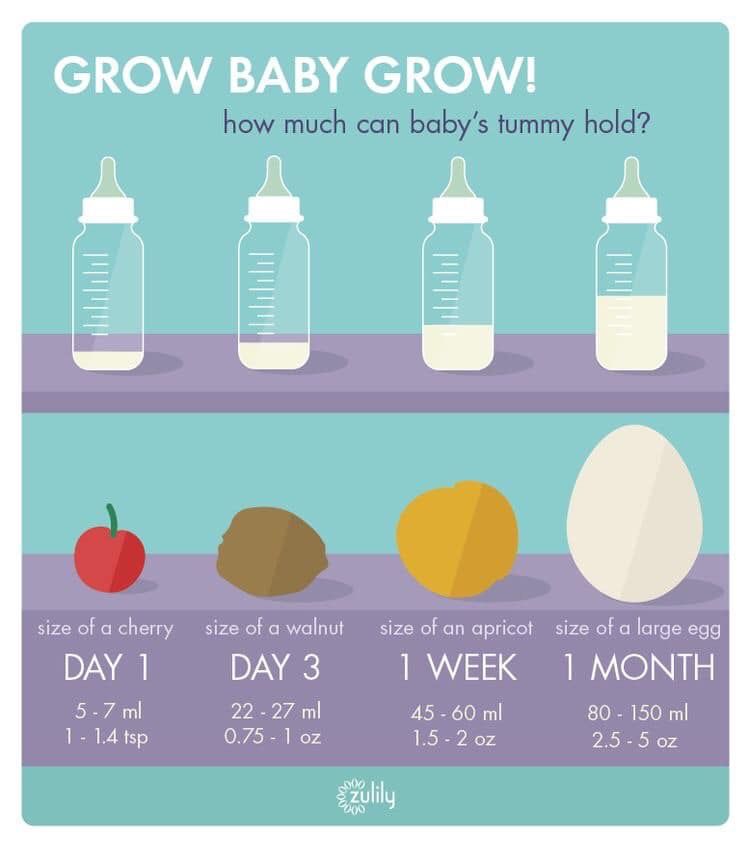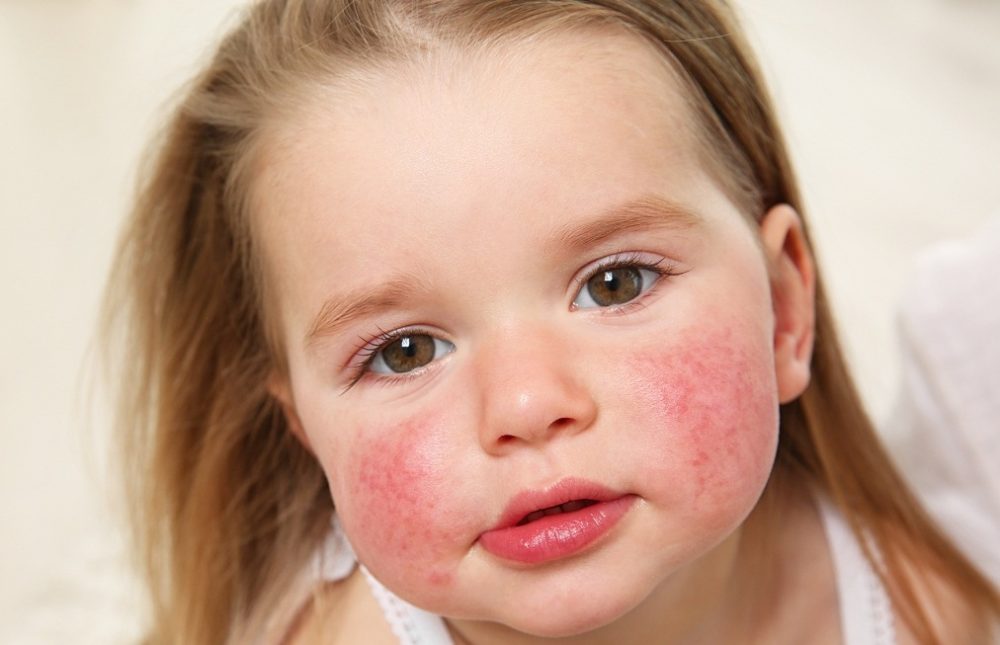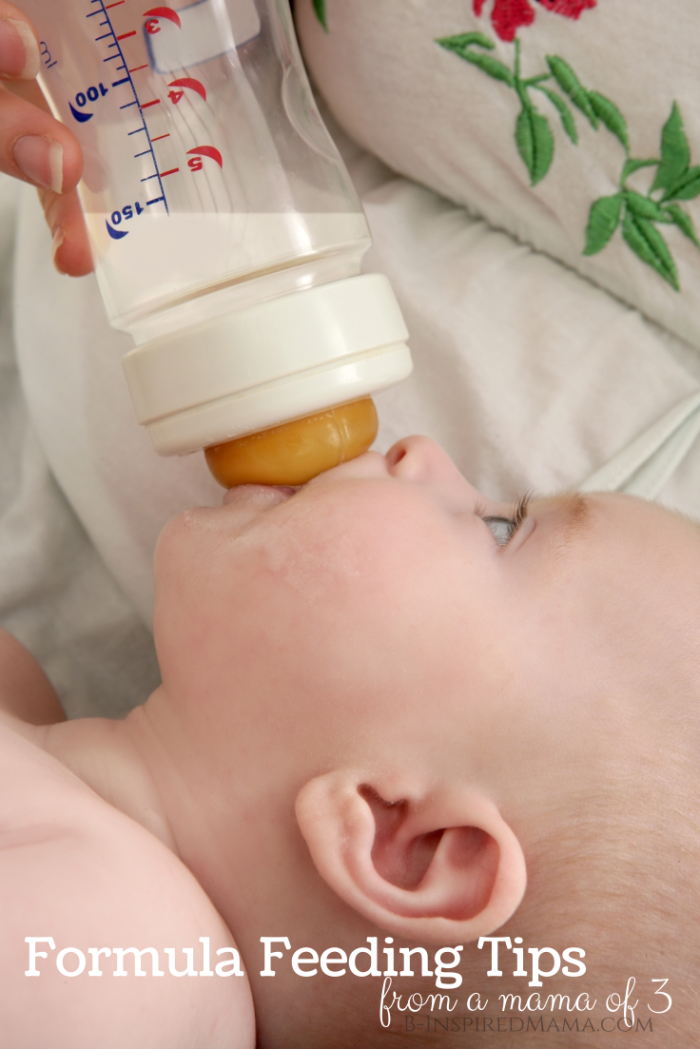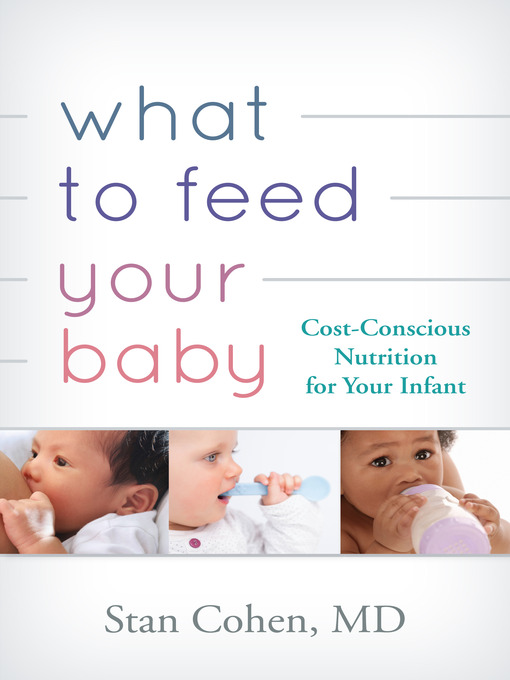What do you feed orphaned baby bunnies
Caring for Newborn Baby Rabbits
IF THESE ARE WILD BABIES
It’s that time of year again. Wild babies everywhere. But are they at risk?
Wild rabbits hide their nests in plain view, often in the middle of your yard, bushes, etc. If you find a nest that has been disturbed, do the best you can to restore it and leave the babies in there. If a dog discovers the nest, do your best to restore it (with grass, leaves, whatever mama has used), make sure the kits are in there, and find a way to keep the dog(s) away from the nest. Mama will return for her babies and taking them away will seriously decrease their chance of survival. If you do not see the mama—DON’T WORRY—they only nurse their babies a few minutes a day, then they stay away so as to not draw predators to the nest.
If a kit is injured or an animal brings you an injured baby, if you have no choice but to help a baby, please do not try to care or it yourself—-get it to a rabbit vet or a wildlife rehabilitator
- Local wildlife rehabilitator: https://www.
nwrawildlife.org
- List of rabbit vets: http://rabbit.org/vet-listings/
The best thing you can do for wild babies is to leave them alone (restored to the nest) or, if injured, get them to a rabbit vet or wildlife rehabilitator.
DOMESTIC/PET RABBITS
WHERE TO PUT THE BABIES
Make the babies a soft nest area in a box with clean towels. We like to put one folded towel on the bottom and another bunched on top of that, so the babies can snuggle into it. You can also purchase soft nesting wool from a pet store and put that on top of the towel. You can also take whatever nesting material they were in and put it in the box as well. Cover the box almost entirely with a light towel, making sure that there will be enough air so the babies do not suffocate. Leaving about a one inch gap at the top is usually sufficient. Keep the babies in an out-of-the way, QUIET area, such as an adult’s bedroom. If the room temperature is between 68-72 degrees you will not need to provide extra heat, but if it’s cooler than that you will need to provide extra warmth.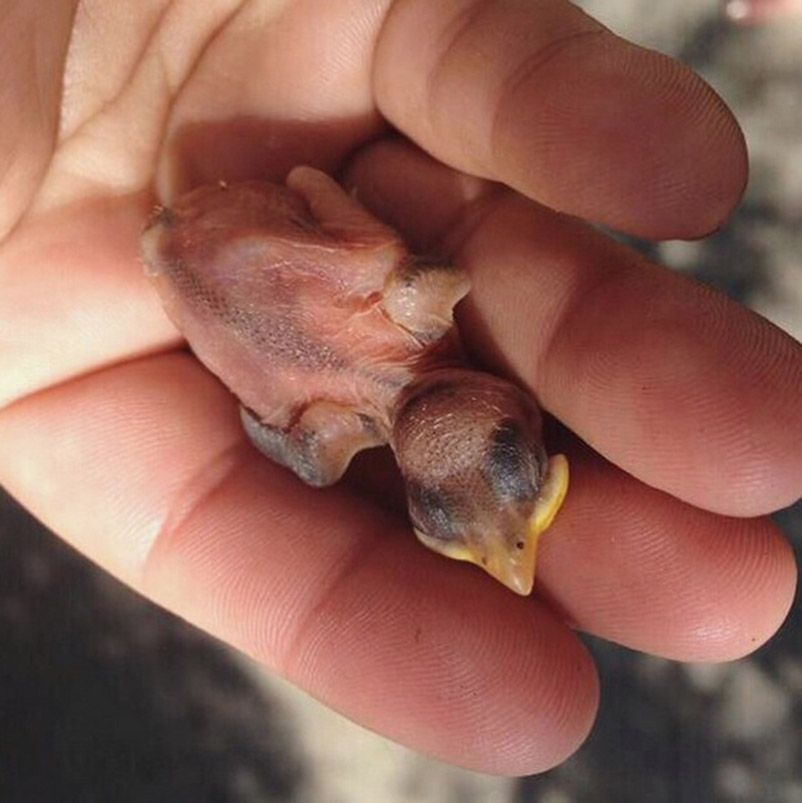 Use a heating pad set on low and slip it under one half only of the box. We do it this way so that the babies can move to a cooler area if it gets too warm. DO NOT put babies directly on heating pad, as babies can burn themselves very badly.
Use a heating pad set on low and slip it under one half only of the box. We do it this way so that the babies can move to a cooler area if it gets too warm. DO NOT put babies directly on heating pad, as babies can burn themselves very badly.
If the babies were with their mamma, but she is not caring for them (and you are sure she is ignoring them) you may need to separate her from them so they will not get hurt. Rabbit milk is very caloric and the kittens (baby rabbits) only nurse for a few minutes a day, so if you think that she is not caring for them based only on the fact you don’t see them feed…think again. If you do think they are being neglected, you can check: Are they cold? Are they making crying sounds for more than a few minutes before (or at) feeding time? Are they blue? Is the skin shriveled? Check for dehydration: gently pinch together the skin at the nape of the neck. If it sticks together or stays in a tent, they are dehydrated. A healthy kit has a round belly, is warm, gains weight on a daily basis, and snuggles with its litter mates. If they are dehydrated, cold, losing weight or becoming injured, of course, something must be done
A healthy kit has a round belly, is warm, gains weight on a daily basis, and snuggles with its litter mates. If they are dehydrated, cold, losing weight or becoming injured, of course, something must be done
WHAT TO FEED THE BABIES
Baby rabbits should be fed Kitten Milk Replacer (KMR) or goat milk, which you can buy at pet stores, or sometimes even a local veterinarian’s office. Because rabbit milk is the most caloric of all mammals, we add in one tablespoon of 100% heavy whipping cream (no sugar) to each can of KMR. Most kits will not nurse from the baby animal bottles you can buy at stores. Instead, use a sterile oral syringe, which can be purchased at most pharmacies. A better alternative are these nipples, which come the a syringe, but you may not be able to find them locally/right away (link).
It is best to feed baby rabbits no more than twice a day, but sometimes it takes more feedings to get an adequate amount into them, especially at first.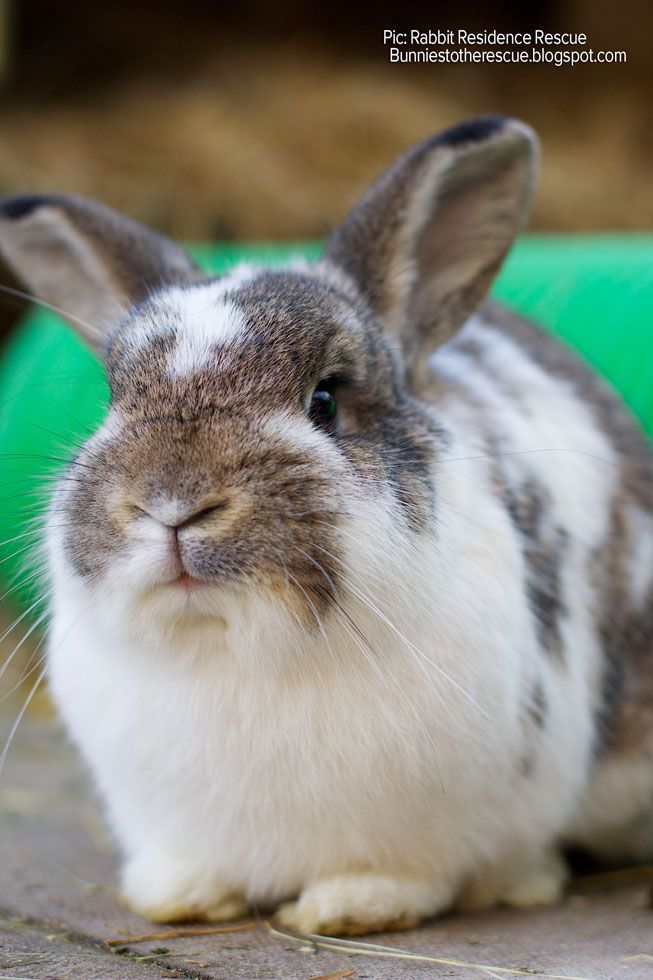
How much to feed varies greatly on what breed of rabbit you are feeding, and how big the kit is, but here is a basic guideline for the daily amount to feed a domestic rabbit who will be approximately 5-6 pounds as an adult (average rabbit size). You can increase the amounts as needed for larger breeds.
To help the kits maintain healthy gut bacteria, go to your local health food store (and get a bottle of ACIDOPHILUS. Ask for the capsules that have the “grainy stuff” inside (they are easier to mix than the “powdery stuff”) and add a bit to the formula at each feeding.
ALL amounts below should be divided into two feedings per day.
- Newborn – 1 week
- 4-5 cc formula
- 1-2 weeks
- 10-15 cc formula
- 2-3 weeks
- 15-30 cc formula
- 3-6 weeks, until weaned
- 30 cc formula
HOW DO I DO THIS?
Baby rabbits feed from their mothers while lying on their backs. You may loosely wrap baby in a soft face cloth or hand towel and lay it on your lap or in the crook of your arm. If bunny will NOT eat this way, of course, do the best you can. It is ABSOLUTELY CRUCIAL to let the baby eat at it’s own pace—especially if it is not suckling from the syringe willingly. If you squirt the liquid in too quickly you can aspirate (get liquid in) the lungs and the rabbit will suffocate.
You may loosely wrap baby in a soft face cloth or hand towel and lay it on your lap or in the crook of your arm. If bunny will NOT eat this way, of course, do the best you can. It is ABSOLUTELY CRUCIAL to let the baby eat at it’s own pace—especially if it is not suckling from the syringe willingly. If you squirt the liquid in too quickly you can aspirate (get liquid in) the lungs and the rabbit will suffocate.
Until their eyes open (10 days): After each feeding it is important to make the bunny defecate and urinate to keep the intestinal tract and urinary system running smoothly. Use a soft cloth or a cotton ball moistened with warm water and gently stroke the genital area until the bunny starts producing stool and urine. Keep stroking until the bunny stops. You are replicating the behavior of the mother rabbit who would lick her young to stimulate them to go to the bathroom. The stool will be soft and may be varying shades of green and yellow.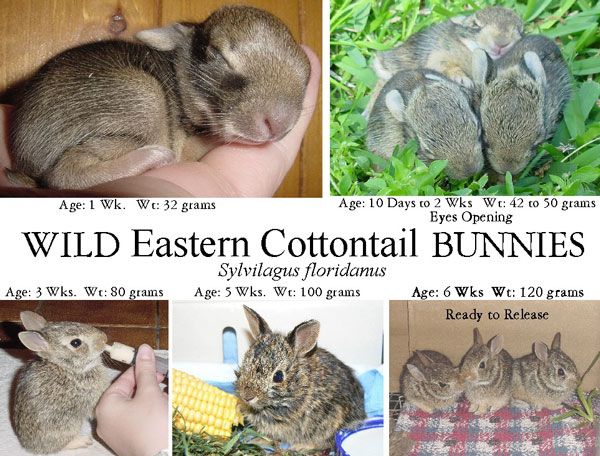 If the urine is brown and gritty, the buns are not adequately hydrated and you need to get them to a rabbit vet ASAP—-it is an emergency. Be sure to clean baby’s mouth with a damp cloth or paper towel, so that no milk dries in the hair.
If the urine is brown and gritty, the buns are not adequately hydrated and you need to get them to a rabbit vet ASAP—-it is an emergency. Be sure to clean baby’s mouth with a damp cloth or paper towel, so that no milk dries in the hair.
Baby rabbit eyes open at about 10 days of age. You may start introducing them to hay and pellets at this point, but no veggies or fruits yet. Just leave some timothy or orchard and alfalfa hay and pellets in a corner of the box where the babies can easily get to them. Make sure it the pellets are plain, high fiber and fresh, with no added goodies such as dried banana chips or seeds. Don’t ever leave a deep water dish in which a baby could drown; instead, use something shallow and rinse and fill it frequently.
If you have any questions, please contact us.
Caring For Orphan Baby Rabbits
Wild Baby Bunnies – Orphaned or Not?
Wild baby bunnies are most often not orphaned! Many people mean well when they contact HRS after discovering an “abandoned” nest of wild rabbits. Often they wish to “rehabilitate” them with some advice from others. The reality is fewer than 10% of orphaned rabbits survive a week, and the care that people attempt to provide can be illegal, unnecessary, and potentially harmful.
Often they wish to “rehabilitate” them with some advice from others. The reality is fewer than 10% of orphaned rabbits survive a week, and the care that people attempt to provide can be illegal, unnecessary, and potentially harmful.
The best thing you can do is put the bunny right back where you found him, in the general area, as the mom will only come back at night to call and find him. Leave the area. If injured, please contact a wildlife rehabber or rabbit vet immediately! You can search Google for your state/country and wildlife rehabber. Also search your state + wild rabbit rehabbers. You can call your Humane Society for referral and also check here: http://www.owra.org/find-a-wildlife-rehabilitator If you find a baby with eyes open, and he appears healthy, leave him be.
I/My Dog/My Cat Found a Rabbit Nest! What Do I Do?
Rabbits hide their nests in plain view, often putting them in the open, sometimes in the middle of the lawn, as well as in brush piles and long grass.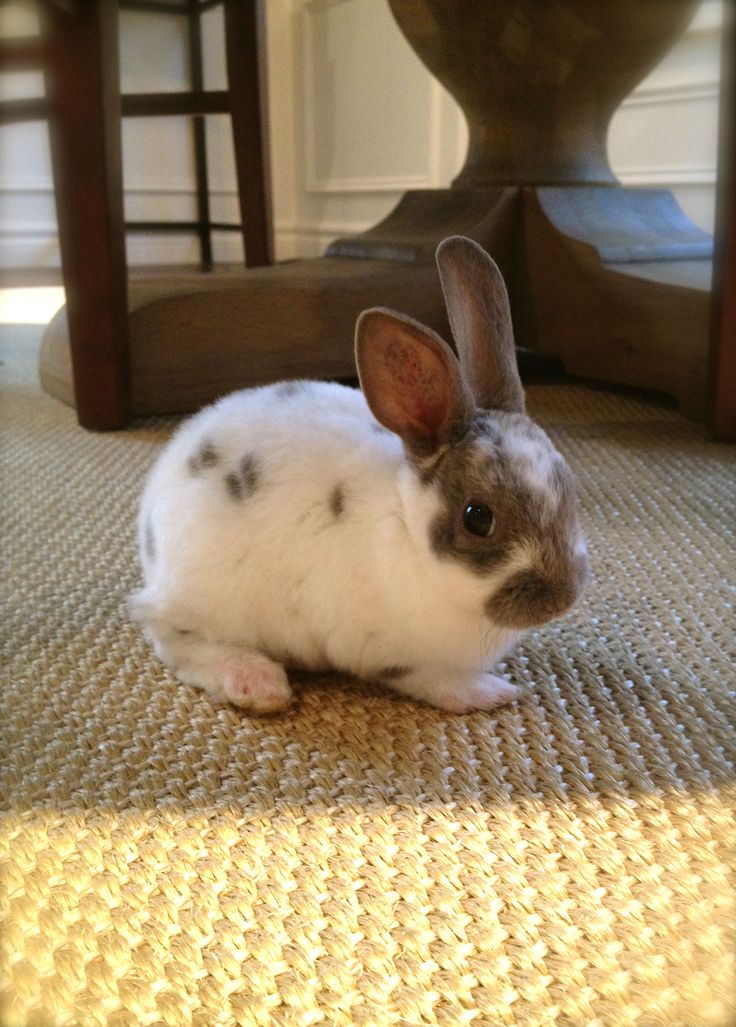 If you find a nest that has been disturbed, do all you can to restore and protect it. Do NOT bring it inside. If a dog has discovered the nest, keep your dog away from the area and reconstruct the nest with grasses. If need be, you can move the nest a few feet away where safer, even up to 5-6 feet away. A moved nest should always be covered with string in a tic tac toe pattern and monitored to be sure the mother found it and came back to the babies. She will scrabble away the surface area to feed her babies beneath her and then scrabble the earth, grass, leaves, back over the nest to hide it again so it’s pretty easy to see if the string has been disturbed and if the babies are warm.
If you find a nest that has been disturbed, do all you can to restore and protect it. Do NOT bring it inside. If a dog has discovered the nest, keep your dog away from the area and reconstruct the nest with grasses. If need be, you can move the nest a few feet away where safer, even up to 5-6 feet away. A moved nest should always be covered with string in a tic tac toe pattern and monitored to be sure the mother found it and came back to the babies. She will scrabble away the surface area to feed her babies beneath her and then scrabble the earth, grass, leaves, back over the nest to hide it again so it’s pretty easy to see if the string has been disturbed and if the babies are warm.
Baby jackrabbits wait like this for momBabies should never be put back into a nest that has been flooded with water, has bugs/ants visibly crawling in and out, or if a baby has been killed and there is blood in the nest. Use common sense. Baby bunnies who have fleas are compromised and should be immediately taken to a wildlife rehabber or humane society, rabbit vet.
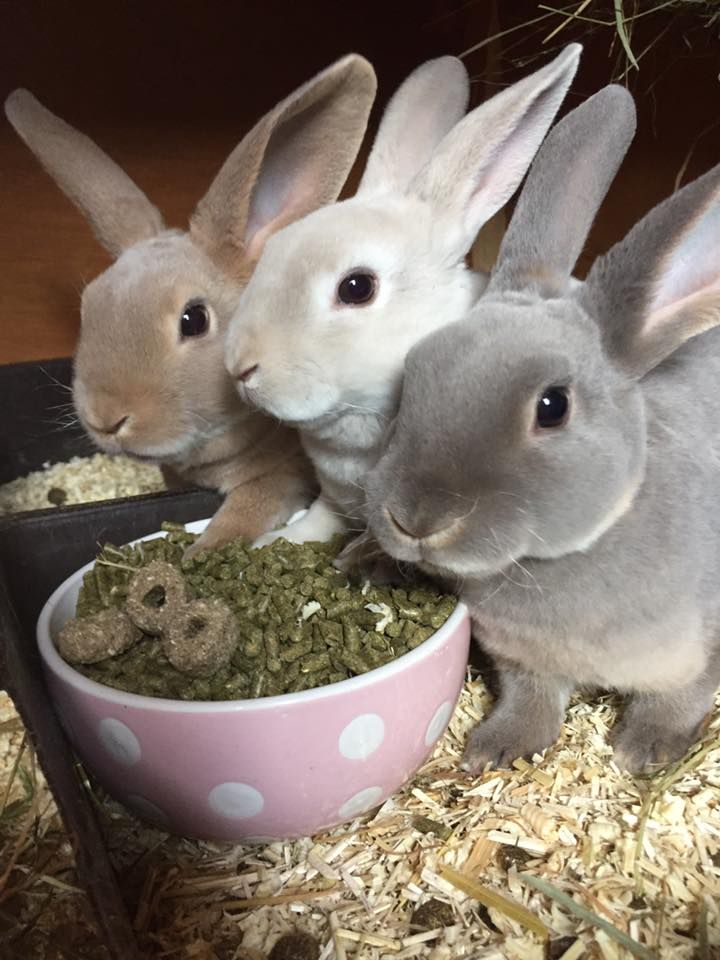
Rabbit mothers nurse their babies for approximately 5 minutes a day. Both wild and domestic mothers will be in the nest early in the morning and then again in the evening. The milk is very rich and the babies “fill up” to capacity within minutes. Mother rabbits do not “sit” on the babies to keep them warm as do some mammals and birds. They build a nest with fur and grasses which helps to keep the babies warm in between feedings. For domestic/pet rabbits, do not force a mother rabbit to sit in the nest box. You can pick up the babies and see if they are feeding by checking the size of their stomachs (should not be sunken in), the pinkness of their skin and activity level (they should not be blue in color or sluggish in movement) and the amount of time that you hear them crying (baby bunnies should be quiet most of the day….if they are crying constantly then they are not getting fed). If you come across a nest of wild bunnies, and the mother is nowhere to be seen, please DO NOT disturb them.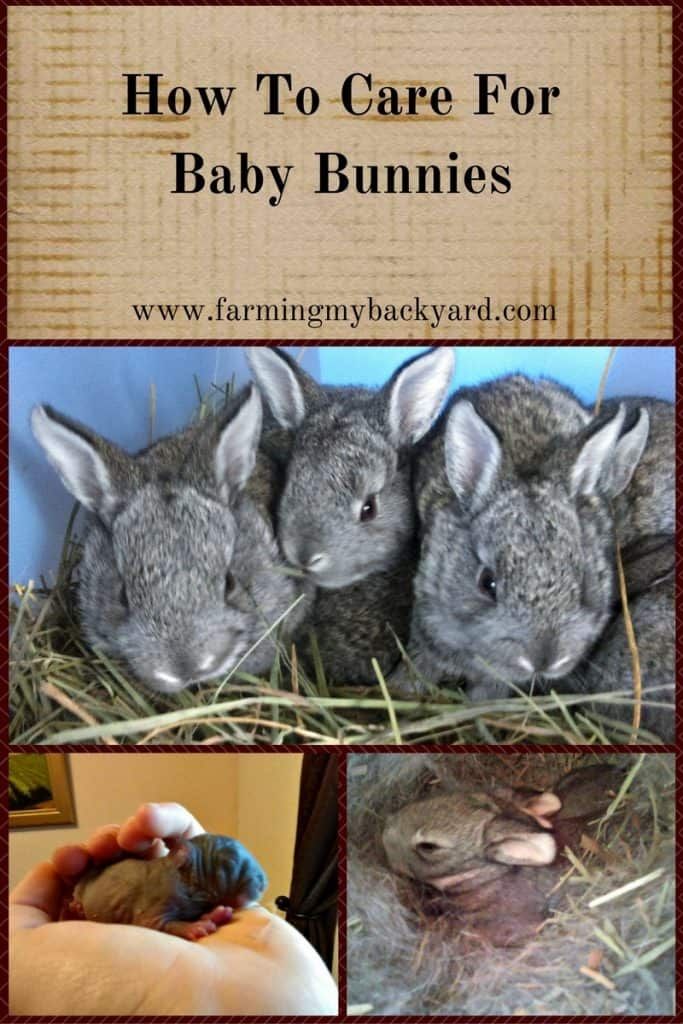
If your dog disturbs a nest, or you find a wild bunny with his eyes open, please put him back if not injured. Mom will be coming back at night to call and feed him only once in the middle of the night. Do not take the bunny inside or feed him! IT IS A MATTER OF HIS/HER SURVIVAL AND UP TO US AS HUMANS TO LEAVE NATURE BE AND LET THE MOM CARE FOR HER YOUNG. We often hear of mothers moving their babies and their nests, and have seen moms come back every night for up to a week to look for her missing baby. Do not take the baby from the mom or she will be frantic. Many call or write saying, “… but it is raining, etc., ” but remember, these are wild bunnies and belong out there.
I/My Dog/My Cat Destroyed a Wild Rabbit Nest! What Do I Do?
Remake the nest as best you can with grasses, hay, straw in the same place. Nests can be moved to a safer place up to 10′ away from the original site and can be reconstructed if necessary. To make a new nest, dig a shallow hole about 3″ deep and put into it as much of the original material as you can recover, including the mother’s fur.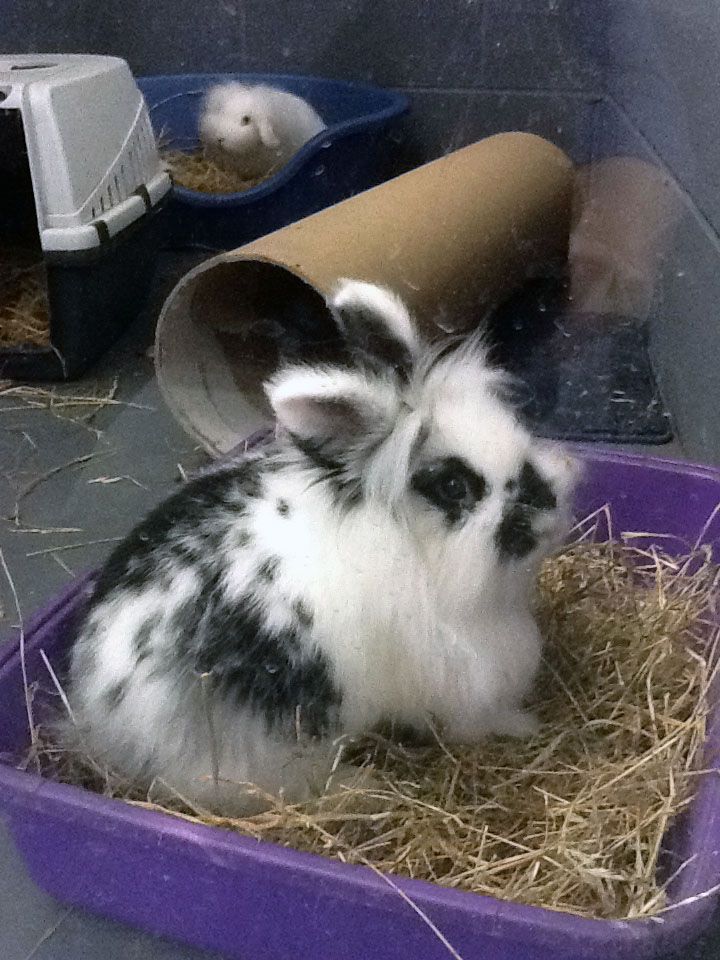 Add dried grass as needed, and put the young back. Mother rabbits return to the nest to nurse only at night, staying away as much as possible so as not to attract predators. To determine if the mother is returning, create a tic-tac-toe pattern over the nest with straw, grasses or tiny twigs. Wait 24 hours to see if the twigs have been disturbed. She may be able to feed them without moving the twigs much, so double check–If the babies look healthy, are warm, then the mother is coming back. If they are cold, dehydrated, get them to a professional; do not care for them yourself. Please contact a Wildlife Rehabber or rabbit vet or Humane Society immediately. Google your state and wildlife rehabbers. Also check http://www.humanesociety.org/animals/resources/tips/find-a-wildlife-rehabilitator.html and http://www.owra.org/find-a-wildlife-rehabilitator
Add dried grass as needed, and put the young back. Mother rabbits return to the nest to nurse only at night, staying away as much as possible so as not to attract predators. To determine if the mother is returning, create a tic-tac-toe pattern over the nest with straw, grasses or tiny twigs. Wait 24 hours to see if the twigs have been disturbed. She may be able to feed them without moving the twigs much, so double check–If the babies look healthy, are warm, then the mother is coming back. If they are cold, dehydrated, get them to a professional; do not care for them yourself. Please contact a Wildlife Rehabber or rabbit vet or Humane Society immediately. Google your state and wildlife rehabbers. Also check http://www.humanesociety.org/animals/resources/tips/find-a-wildlife-rehabilitator.html and http://www.owra.org/find-a-wildlife-rehabilitator
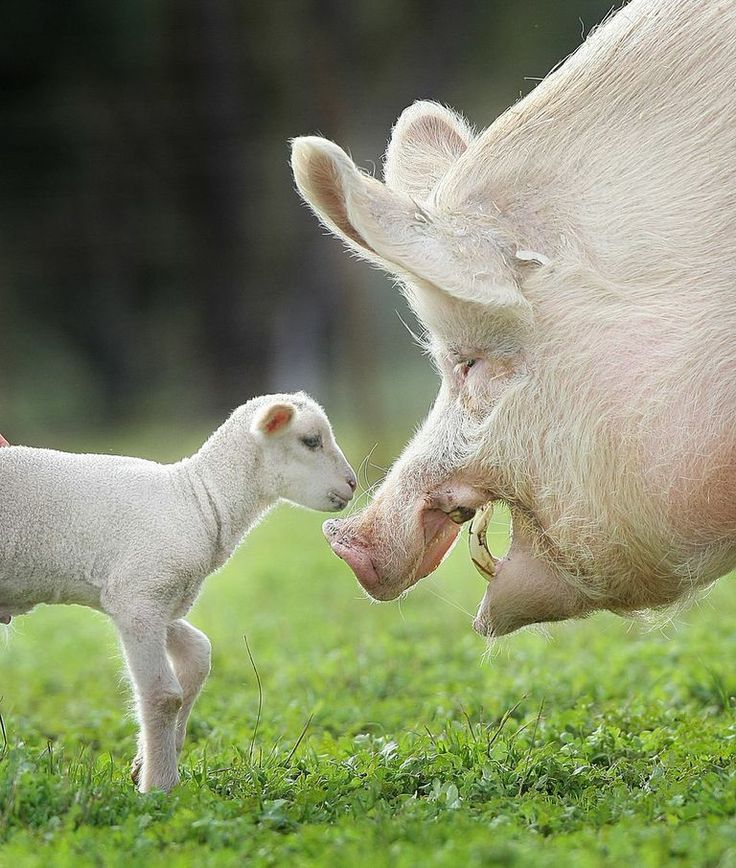
How Do I Know If the Wild Baby Bunnies Need Help?
Very young wild baby bunnies with eyes closed and ears back rarely survive in captivity, even given the most expert human care; and so it is very important to determine whether they really need help. Try to assess whether the infants seem warm and healthy or cold, thin, and dehydrated. One test for dehydration is to gently pinch the loose skin at the back of the neck. If it does not spring back in one second, or stays in a “tent,” the bunny is SEVERELY dehydrated and needs rehabilitation IMMEDIATELY by a professional rabbit vet or rehabber. Another test is to stroke the genital area to stimulate elimination if the eyes are closed. If the pee is brown and gritty, the mother rabbit has not been there to help the bunnies urinate. The brown, gritty urine is toxic, and the infant bunny must be cared for by a professional. Please contact a Wildlife Rehabber or rabbit vet immediately.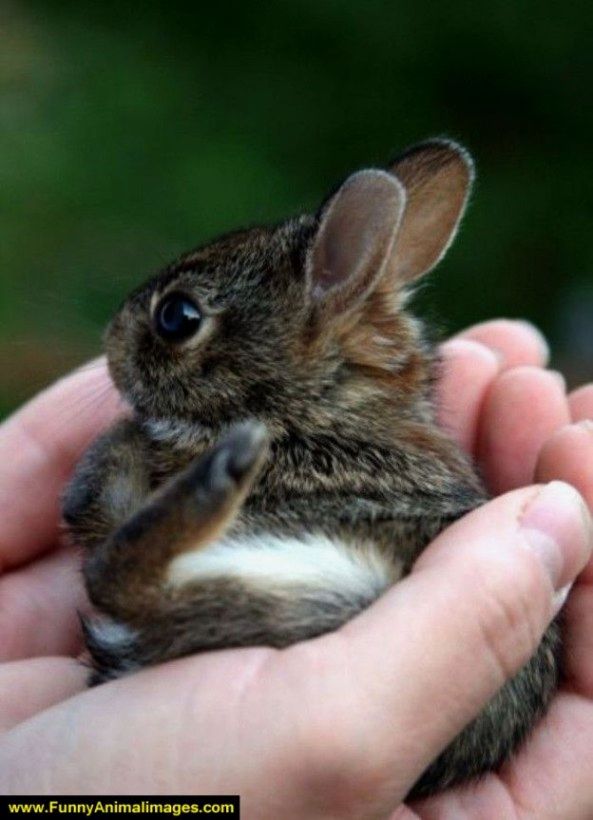 Google your state and wildlife rehabber, call your Humane Society, and also check http://www.humanesociety.org/animals/resources/tips/find-a-wildlife-rehabilitator.html and http://www.owra.org/find-a-wildlife-rehabilitator.
Google your state and wildlife rehabber, call your Humane Society, and also check http://www.humanesociety.org/animals/resources/tips/find-a-wildlife-rehabilitator.html and http://www.owra.org/find-a-wildlife-rehabilitator.
Older baby bunnies who are found outside of the nest may not be orphaned or in need of assistance. This is most often the case. Baby cottontails are born without fur but develop a full coat in a week. Their eyes open in 10 days, and in three to four weeks they are weaned. At this age, they may explore the world outside of the nest but return there to sleep. They are not ignored by the mother but stay with the family group until four or five weeks of age. To determine whether a bunny of this age needs assistance, first see if the bunny feels cold to the touch; perform the dehydration test. Also look for bleeding, convulsing, fly larvae, broken limbs; if any, get to a rabbit vet or emergency vet immediately. If he is just out and about, leave him be.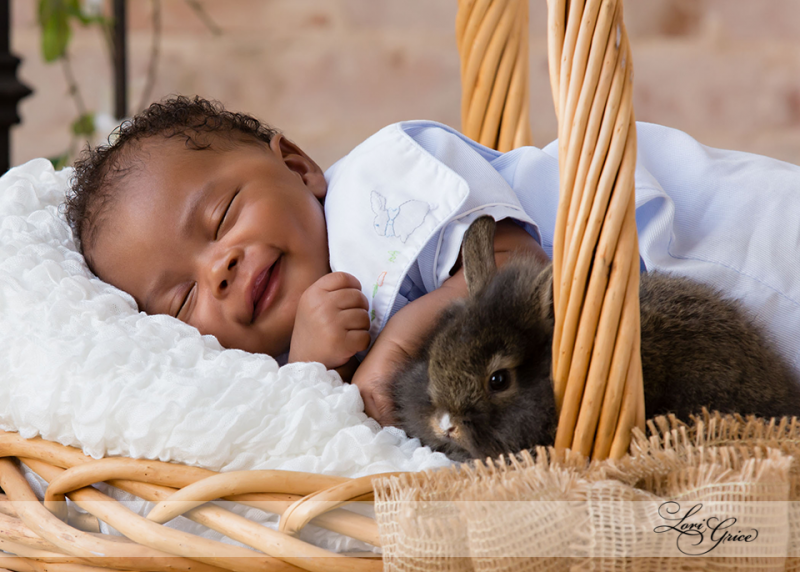 He is discovering his world, waiting for mom to return at night when we humans are asleep. Don’t assume because he is letting you pick him up, he needs help. They are prey animals, taught to freeze when a predator (or human) approaches. Leave him be!
He is discovering his world, waiting for mom to return at night when we humans are asleep. Don’t assume because he is letting you pick him up, he needs help. They are prey animals, taught to freeze when a predator (or human) approaches. Leave him be!
What if the Baby Bunny is Injured?
Either call or take him to your local rabbit vet, humane society or animal shelter/animal control. Call first as often they will come pick up the baby. If after hours, contact a local emergency rabbit vet or rabbit vets found here and also here. The best thing you can do for an injured wild baby bunny is to get in touch with a skilled Wildlife Rehabber by searching your state/country and wildlife rehabber, or calling your Humane Society, and or trying this link http://www.humanesociety.org/animals/resources/tips/find-a-wildlife-rehabilitator.html and http://www.owra.org/find-a-wildlife-rehabilitator
Is there anything I can do to avoid orphaning wild baby bunnies?
The harsh reality is that many of us who care about wild baby bunnies may be contributing to the suffering and death. House cats who roam outside will kill about every other time they go out. And unlike feral cats who hunt because they are hungry, and kill immediately, house cats maul and torment their prey, sometimes skinning baby bunnies alive. Cat owners need to provide managed outdoor habitats for their cats – such as window boxes or pens. Providing a bell on your cat will help warn the wildlife if you cannot keep him inside. Keep your dogs on a leash with you if you see a rabbit nest.
House cats who roam outside will kill about every other time they go out. And unlike feral cats who hunt because they are hungry, and kill immediately, house cats maul and torment their prey, sometimes skinning baby bunnies alive. Cat owners need to provide managed outdoor habitats for their cats – such as window boxes or pens. Providing a bell on your cat will help warn the wildlife if you cannot keep him inside. Keep your dogs on a leash with you if you see a rabbit nest.
Lawn chemicals can produce convulsing death in baby rabbits. According to the Poison Control Center for Animals, lawn applications that contain herbicides are not directly toxic to small animals; but they may make toxic plants more palatable to them and may make the animals sick for a few days. Products which contain insecticides, such as Dursban or Diazinion, which are added to many lawn products to control fleas or grubs in the lawn, are toxic.
The Bunny is
Wild and Really Orphaned – How do I care for it?Again, make sure you KNOW for sure the mom was killed and the bunnies are abandoned (not warm, etc. ). You will not see the mom. The mom will only come back in the middle of the night to feed her babies. If the mom was killed, the best thing you can do for a wild orphaned baby bunny is to get in touch with a skilled rehabilitator. In the meantime, call your local humane society or animal control and one of these vets for a wildlife referral: Rabbit Vets and Pet Bunny Vets. Google your state and wildlife rehabbers, and also try http://www.humanesociety.org/animals/resources/tips/find-a-wildlife-rehabilitator.html and http://www.owra.org/find-a-wildlife-rehabilitator
). You will not see the mom. The mom will only come back in the middle of the night to feed her babies. If the mom was killed, the best thing you can do for a wild orphaned baby bunny is to get in touch with a skilled rehabilitator. In the meantime, call your local humane society or animal control and one of these vets for a wildlife referral: Rabbit Vets and Pet Bunny Vets. Google your state and wildlife rehabbers, and also try http://www.humanesociety.org/animals/resources/tips/find-a-wildlife-rehabilitator.html and http://www.owra.org/find-a-wildlife-rehabilitator
How much formula should I feed a Wild Orphaned Bunny until I get him/her to a rehabber?
The following is a guideline for the daily amount to feed a TRULY orphaned wild bunny (mother was killed, etc.) Remember with wild bunnies, the mom only comes back at night to call and feed him once or so for 5 mins; please put him back for her if just found and healthy. She leaves them alone between feedings. Don’t assume they are abandoned! Wild rabbits NEED a skilled wildlife rehabber. You should not feed at home or the chances of their surviving is extremely low! Most die from bloat, wrong feedings/stress. These feedings are NOT meant to take place of an actual rehabber, but for someone only who may live too far from a rehabber and is faced with a wild mother, killed, for example. All others need to call your humane society, local rabbit vet, or google your state and wildlife rehabber. You can also check here http://www.humanesociety.org/animals/resources/tips/find-a-wildlife-rehabilitator.html and http://www.owra.org/find-a-wildlife-rehabilitator
Don’t assume they are abandoned! Wild rabbits NEED a skilled wildlife rehabber. You should not feed at home or the chances of their surviving is extremely low! Most die from bloat, wrong feedings/stress. These feedings are NOT meant to take place of an actual rehabber, but for someone only who may live too far from a rehabber and is faced with a wild mother, killed, for example. All others need to call your humane society, local rabbit vet, or google your state and wildlife rehabber. You can also check here http://www.humanesociety.org/animals/resources/tips/find-a-wildlife-rehabilitator.html and http://www.owra.org/find-a-wildlife-rehabilitator
Age + Amount (This WILL vary SO MUCH depending on type of rabbit. It is impossible over the Internet to see your particular rabbit, so this is only approximate.) Use KMR kitten or KMR kitten plus Goat milk, regular not low fat. Add a pinch of acidophilus (aka Probiotic) to the formula to promote healthy gut flora. Formulas vary depending on region. Avoid Esbilac and any puppy formulas! FEED TWICE A DAY ONLY for healthy babies, three times if low weight. It may be easiest to start with a 3 cc/ml syringe or an eyedropper. Feed only with the bunny sitting UPRIGHT, and point syringe down towards bottom or side of mouth, so if too much comes out, the baby does not aspirate. At first, they may only take a few drops at one feeding until they are not stressed and used to this.
Formulas vary depending on region. Avoid Esbilac and any puppy formulas! FEED TWICE A DAY ONLY for healthy babies, three times if low weight. It may be easiest to start with a 3 cc/ml syringe or an eyedropper. Feed only with the bunny sitting UPRIGHT, and point syringe down towards bottom or side of mouth, so if too much comes out, the baby does not aspirate. At first, they may only take a few drops at one feeding until they are not stressed and used to this.
Newborn to One Week: 2- 2+1/2 cc/ml each feeding (two feedings per day).
1-2 weeks: 5-7 cc/ml each feeding (two feedings per day). (depending on bunny..may be much LESS if smaller rabbit!) Newborn babies (if eyes closed) all need to be stimulated to urinate and defecate prior to or following feeding until their eyes open. (Except Jackrabbits do not). *See how to below.
2-3 weeks: 7-13 cc/ml each feeding (two feedings). Domestic eyes open at about 10 days of age.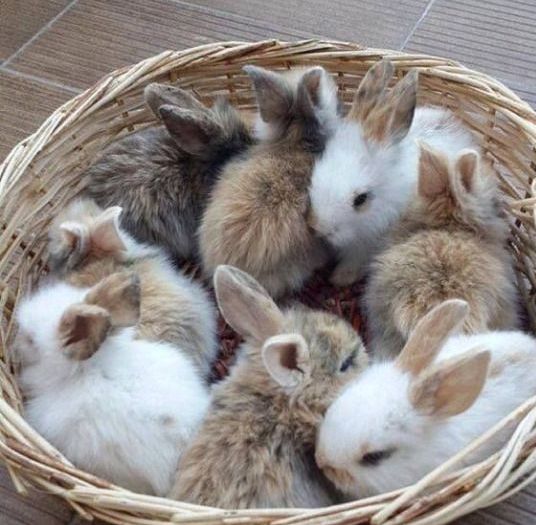 Start introducing them to timothy and oat hay, pellets and water (always add fresh greens for wild ones).
Start introducing them to timothy and oat hay, pellets and water (always add fresh greens for wild ones).
3-6 weeks: 13-15 cc/ml each feeding (two feedings–again, may be LESS depending on size of rabbit! A cottontail/brush bunny will take so much less!! Half this at most.) Cottontails wean and release about 3-4 weeks and jackrabbits much later (9+ weeks), whereas domestic rabbits are 6 weeks.
6 weeks-9weeks for Jackrabbits only, continue up to 9 weeks with formula, gradually changing to a dish for the warm formula, replacing the formula after 9 weeks slowly, continue adding more of their natural greens and hay (dandelions, oat hay, timothy hay, Italian parsley, carrot tops, small carrots cut up) and a small water bowl. Most markets will sell these greens. They need a rehabber before release!
Wild rabbits NEED a skilled wildlife rehabber. These feedings are NOT meant to take place of an actual rehabber, but for someone who may live too far from a rehabber and is faced with a wild mother, killed, for example. Please call your humane society for referrals to rehabbers, or your rabbit vets, or google your state or country and wildlife rehabbers. You can also try here: http://www.humanesociety.org/animals/resources/tips/find-a-wildlife-rehabilitator.html and by state here: http://www.owra.org/find-a-wildlife-rehabilitator or http://www.owra.org/find-a-wildlife-rehabilitator
Please call your humane society for referrals to rehabbers, or your rabbit vets, or google your state or country and wildlife rehabbers. You can also try here: http://www.humanesociety.org/animals/resources/tips/find-a-wildlife-rehabilitator.html and by state here: http://www.owra.org/find-a-wildlife-rehabilitator or http://www.owra.org/find-a-wildlife-rehabilitator
*After each feeding it is important to gently make the bunny defecate and or urinate (brush bunnies/cottontails only..if the eyes are not opened yet) to keep the intestinal and urinary system running smoothly (just UNTIL their eyes open). No need to do this for jackrabbits; they go on their own. Use a cotton ball moistened with warm water after eating, and gently stroke the anal area until the bunny starts producing stool and urine and keep stroking until the bunny stops. You are reproducing the behavior of the mother rabbit who would lick her young to stimulate them to go to the bathroom and to keep the nest clean. Again, ONLY if the eyes are still closed. Handle a wild rabbit only during feedings as excessive handling can be extremely stressful/potentially fatal. Wild rabbits don’t need heat if furred and healthy. Wild rabbits should not be fed at home, but get them to a professional rehabber as it IS CRITICAL for their survival and to be with their own kind. Most die from overfeeding and/or stress.
Again, ONLY if the eyes are still closed. Handle a wild rabbit only during feedings as excessive handling can be extremely stressful/potentially fatal. Wild rabbits don’t need heat if furred and healthy. Wild rabbits should not be fed at home, but get them to a professional rehabber as it IS CRITICAL for their survival and to be with their own kind. Most die from overfeeding and/or stress.
As soon as the wild bunnies’ eyes are open, you may introduce them to plain alfalfa pellets, hay, such as oat hay, timothy, alfalfa and veggies such as carrot tops, Italian parsley, dandelion greens. Dandelion greens and hay (timothy and oat hay) are extremely important for wild rabbits. You can add whole oats from a feed store, and some grated carrots. The greens must be fresh, rinsed, and replaced if not eaten in a few hours. You can place them in a cup of cold water with just the tops sticking out to keep them fresher. (For a domestic rabbit baby, see section under the Domestic heading). Wild cottontail and brush bunny rabbits should be released as soon as they are eating hay and greens and are approximately 5 inches in body length and run from you. This varies with the area, so size is not easy to say. They will be small, but the longer you keep them, the more agitated and difficult to handle they will become and the less likely their chances for survival in the wild. Release ONLY at dusk or dawn. Jackrabbits (hares) are not ready until 9+ weeks.Make sure they get exercise daily. Jackrabbits mature much slower than the brush/cottontails and need to develop strength. If they are ready, earlier, they will let you know.
Wild cottontail and brush bunny rabbits should be released as soon as they are eating hay and greens and are approximately 5 inches in body length and run from you. This varies with the area, so size is not easy to say. They will be small, but the longer you keep them, the more agitated and difficult to handle they will become and the less likely their chances for survival in the wild. Release ONLY at dusk or dawn. Jackrabbits (hares) are not ready until 9+ weeks.Make sure they get exercise daily. Jackrabbits mature much slower than the brush/cottontails and need to develop strength. If they are ready, earlier, they will let you know.
WARNING: Jackrabbits really NEED a skilled wildlife rehabber as they can run from you, throw themselves into walls to get away; many have died or severely injured themselves in captivity as they are so very wild. Please DO NOT raise them if you are not a skilled wildlife rehabber. This is vital. Noises and sounds easily frighten the jackrabbit and they are not able to be handled after 9 weeks.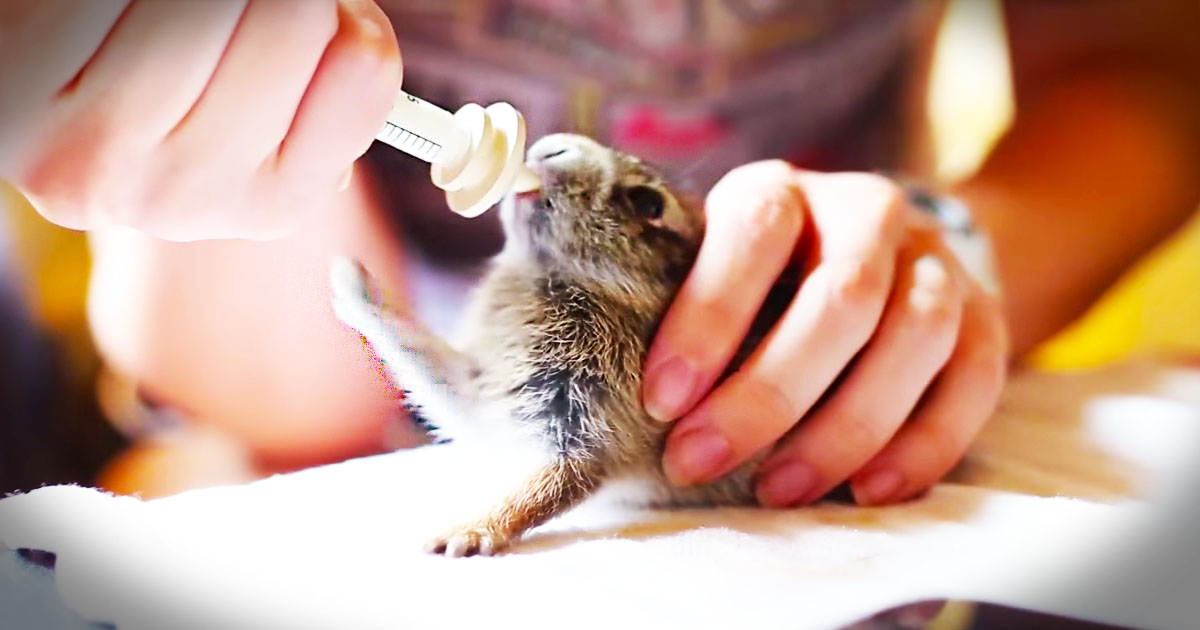 Often, sadly, we get reports of how a well-meaning person who tried to raise a wild rabbit, only to find it literally died of fright or got injured inside the cage. They are wild and belong with their own kind, out in the wild.
Often, sadly, we get reports of how a well-meaning person who tried to raise a wild rabbit, only to find it literally died of fright or got injured inside the cage. They are wild and belong with their own kind, out in the wild.
Jackrabbits really enjoy being raised together, whereas cottontails/brush bunnies may fight and do fine alone. Give them a carrier as their place of privacy (line with thick towels) with plenty of fresh hay and greens described above and water bowl. Again, wild rabbits need a skilled wildlife rehabber; it is critical to their survival.
The Bunny is DOMESTIC (i.e., pet rabbit, NOT wild) and Really Orphaned – How do I care for a domestic baby?
Baby Domestic Agouti Bunny Baby Domestic/Pet Agouti rabbit babyRemember that both the domestic pet rabbit and wild bunny moms only feed their young usually once in the middle of the night. Don’t assume the mom is not caring for them if you don’t see her nurse them. Check their tummies to see if they are round and the babies are warm in the morning–this means she is caring for them.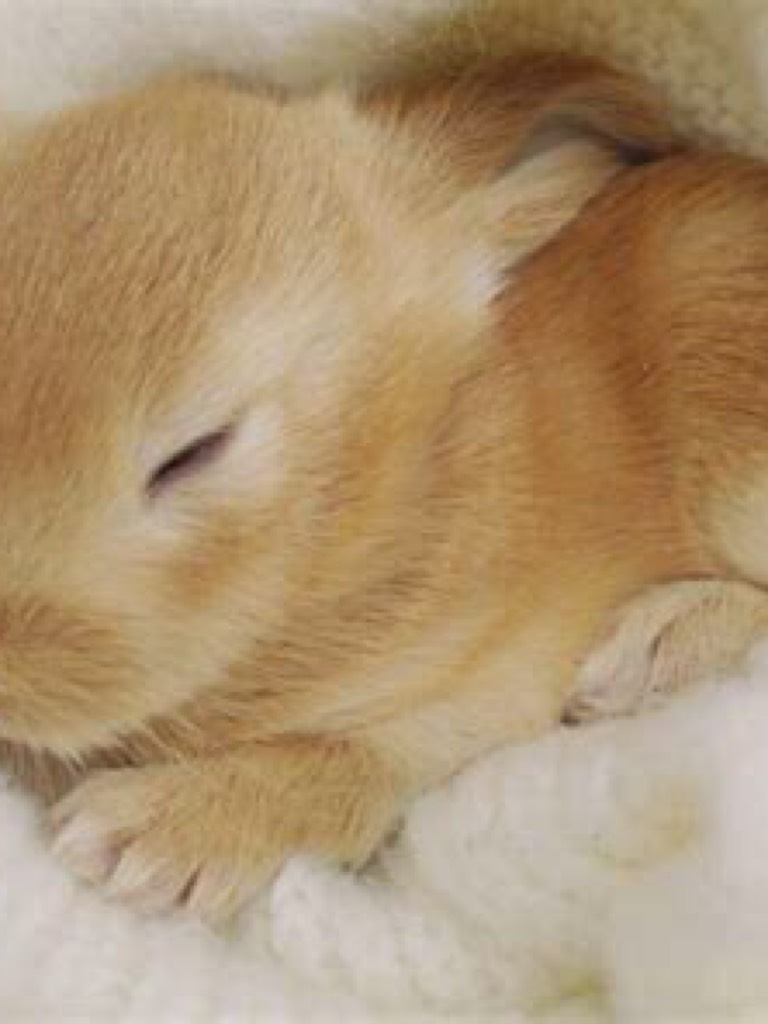 In the rare situation that you have an orphaned domestic bunny, such as when a domestic rabbit mom is sick or refuses to care for her young, you will need to feed the babies. Overfeeding is a leading cause of death in these youngsters which results in fatal intestinal disease.
In the rare situation that you have an orphaned domestic bunny, such as when a domestic rabbit mom is sick or refuses to care for her young, you will need to feed the babies. Overfeeding is a leading cause of death in these youngsters which results in fatal intestinal disease.
If truly orphaned, use KMR KITTEN powder formula (can also use Meyenberg Regular Goat milk found at Safeway in the milk section or Whole Foods until you can find the KMR KITTEN formula), and follow the directions on the can. It may be easiest to start with a 3 cc/ml syringe or an eyedropper. Some use pet nurser nipples on the end of a luer lock syringe, or a teat cannula on the end of a syringe. Feed only with the bunny sitting UPRIGHT, and point syringe down towards bottom or side of mouth, so if too much comes out, the baby does not aspirate! For those who are slow to learn nursing, SC fluids may be necessary to prevent electrolyte imbalance or dehydration (check with a vet on this only!!). Domestic buns with closed eyes should be fed 2 x a day, and the number of feedings gradually decreased until they are weaned.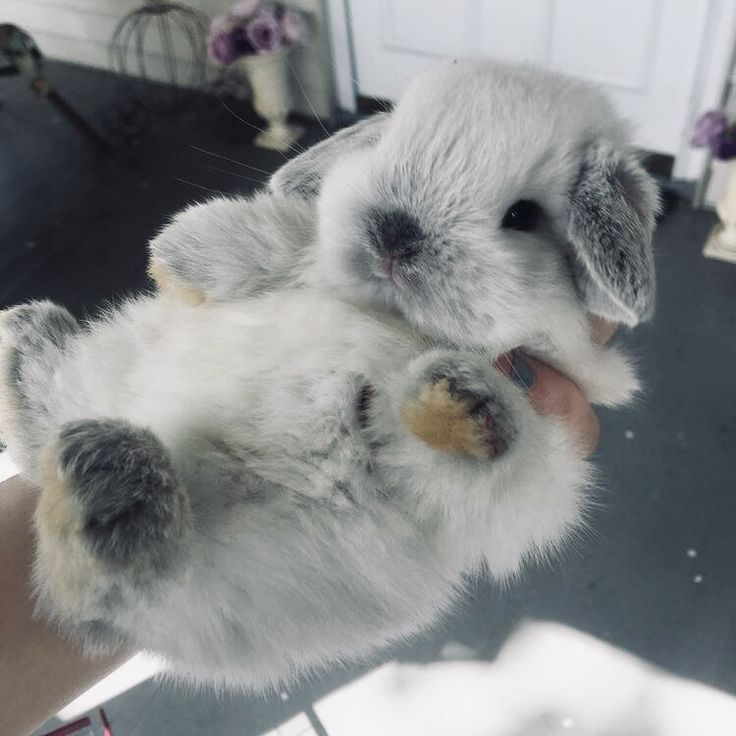 If their eyes are still closed, you need to stimulate their bottoms with a warm moist towel after feedings to help them to pee. (Domestics are weaned about 6 weeks compared to wild bunnies who are weaned about 3-4 weeks for cottontails and 9+ weeks for jackrabbits). Bloat is commonly associated with too frequent feedings and too much at one time.
If their eyes are still closed, you need to stimulate their bottoms with a warm moist towel after feedings to help them to pee. (Domestics are weaned about 6 weeks compared to wild bunnies who are weaned about 3-4 weeks for cottontails and 9+ weeks for jackrabbits). Bloat is commonly associated with too frequent feedings and too much at one time.
Feeding Amounts for DOMESTIC/PET Orphaned babies*: Feed twice a day up to these amounts: Newborn– 2.5 cc/ml each feeding. One week old: 6-7 cc/ml each feeding. Two weeks old: 12-13 cc/ml each feeding. Three weeks to six weeks: Up to 15 cc/ml each feeding (a.m. and p.m.). Note this is for DOMESTIC, NOT WILD bunnies. Each bunny varies. If this is a smaller rabbit, he will consume much less. Do NOT overfeed! Contact an HRS contact, rabbit vet, to be sure.
*After each feeding it is important to make the bunny defecate and urinate (if the eyes are not opened yet) to keep the intestinal tract and urinary system running smoothly (only UNTIL their eyes are open). Use a cotton ball moistened with warm water and gently stroke the anal area until the bunny starts producing stool and urine and keep stroking until the bunny stops. You are reproducing the behavior of the mother rabbit who would lick her young to stimulate them to go to the bathroom and to keep the nest clean.
Use a cotton ball moistened with warm water and gently stroke the anal area until the bunny starts producing stool and urine and keep stroking until the bunny stops. You are reproducing the behavior of the mother rabbit who would lick her young to stimulate them to go to the bathroom and to keep the nest clean.
Provide a soft nest area in a box with clean towels, and cover the babies so it is dark until their eyes are open. Do NOT provide extra heat if the room temperature is at least 65 to 70 degrees F because excessive heat can be fatal. If the room is cooler, then you may place a heating pad on a low setting under no more than HALF of the nest so the bunny can move to a cooler area if it gets too warm, and be sure there is no way the mother rabbit can get to or chew the electrical cord!
For domestic rabbits, if you have a healthy adult rabbit at home and you can collect cecotropes (the soft, chain-like droppings that the rabbit usually eats) then these can be mixed with the KMR to give the baby bunny normal bacteria for its intestinal tract.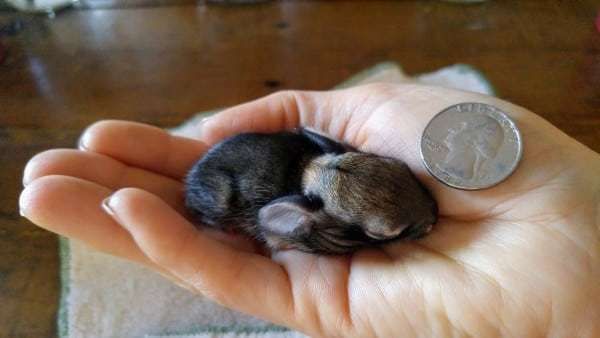 Only one cecotrope per day for 4-5 days is needed. This is particularly important for rabbits under one week of age. Also good is to sprinkle a pinch of acidophilus powder, also called “Probiotic” from human capsules in the milk a little each time for healthy flora for both wild and domestic bunnies.
Only one cecotrope per day for 4-5 days is needed. This is particularly important for rabbits under one week of age. Also good is to sprinkle a pinch of acidophilus powder, also called “Probiotic” from human capsules in the milk a little each time for healthy flora for both wild and domestic bunnies.
As soon as their eyes are open, you may introduce the bunnies to plain alfalfa pellets, hay, such as oat hay, timothy, alfalfa. Please refer to the handout Care of Rabbits for more information on diet for domestic, pet rabbits. You may reach [email protected] for domestic/pet rabbit questions. Below is the email for wild rabbit questions: [email protected] (wild) (If links above did not answer your question).
(See above for wild rabbits). For all rabbits, avoid ANY regular milk, puppy formulas, etc. Use KITTEN formulas like KMR. Avoid Esbilac. Feed only upright. Less is better than more! Overfeeding will cause bloat and pain and possible death. Please get to a rehabber.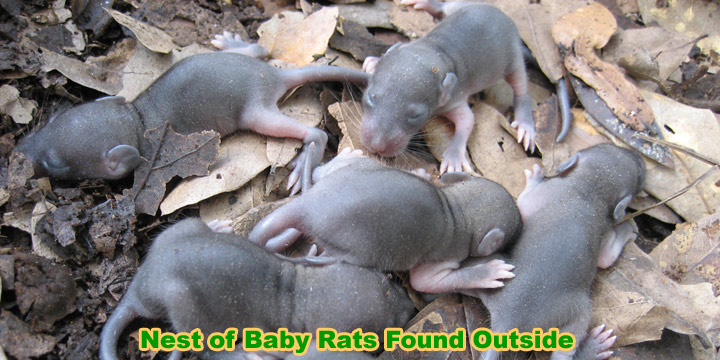
Sources: Caring for Cricket – What Not To Do When You Find a Wild Baby Bunny by Julie Smith and Handout by Midwest Exotic Animal Hospital, and additional wild bunny info by M. Wilson (HRS educator and rehabber). For questions not answered about wild rabbits above, email: wildbunnyrehab at gmail.com
Below content was merged from: /caring-for-orphans/
Rabbit mothers nurse their babies for approximately 5 minutes a day. They will be in the nest or nest box early in the morning and then again in the evening. The milk is very rich and the babies “fill up” to capacity within minutes. Mother rabbits do not “sit” on the babies to keep them warm as do some mammals and birds. They build a nest with fur and grasses which helps to keep the babies warm in between feedings. Do not force a mother rabbit to sit in the nest box. You can pick up the babies and see if they are feeding by checking the size of their stomachs (should not be sunken in), the pinkness of their skin and activity level (they should not be blue in color or sluggish in movement) and the amount of time that you hear them crying (baby bunnies should be quiet most of the day….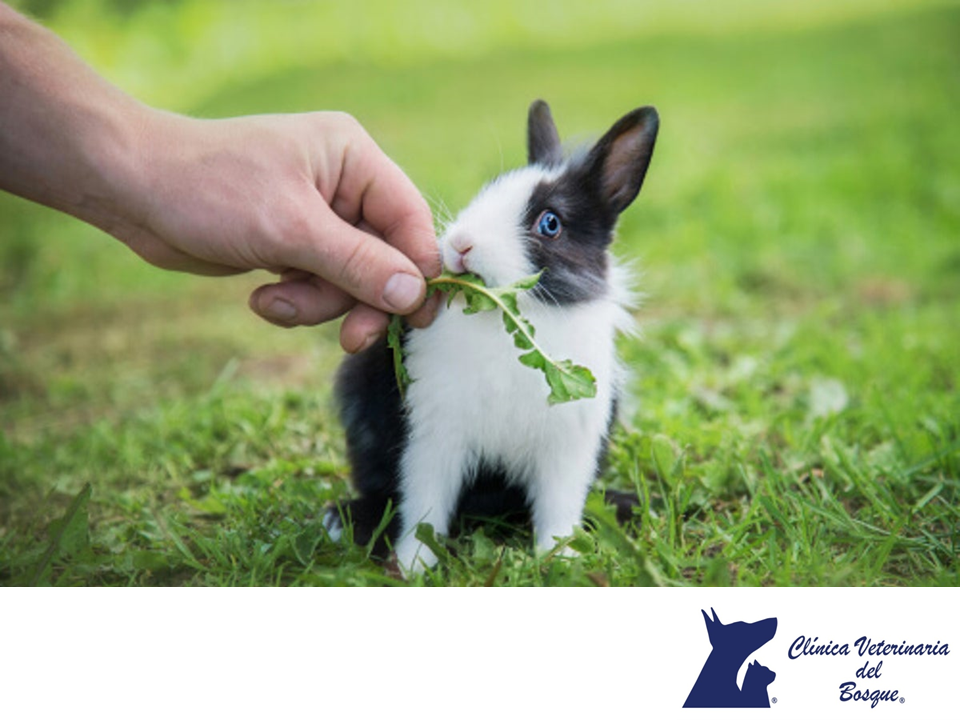 if they are crying constantly then they are not getting fed). If they are warm, mom is most likely feeding them, but again, she only comes back in the middle of the night.
if they are crying constantly then they are not getting fed). If they are warm, mom is most likely feeding them, but again, she only comes back in the middle of the night.
If you come across a nest of bunnies in the wild and the mother is no where to be seen, please DO NOT disturb them…this is normal. By removing them from the nest you are greatly reducing their chances of survival.In the rare situation that you have an orphaned bunny, such as when a mother rabbit is killed by another animal or in the road, or when a domestic rabbit refuses to care for her young, you may try feeding with Kitten Milk Replacer (KMR) or Meyenberg Goat Milk (for wild rabbits, but they need a professional reahabber–do not feed at home). Remember though, that both wild/domestic bunny moms only feed in the middle of the night, so don’t assume she is not caring for them! For true orphans, remember to feed ONLY TWICE A DAY. Overfeeding is a leading cause of death in these youngsters which results in fatal intestinal disease.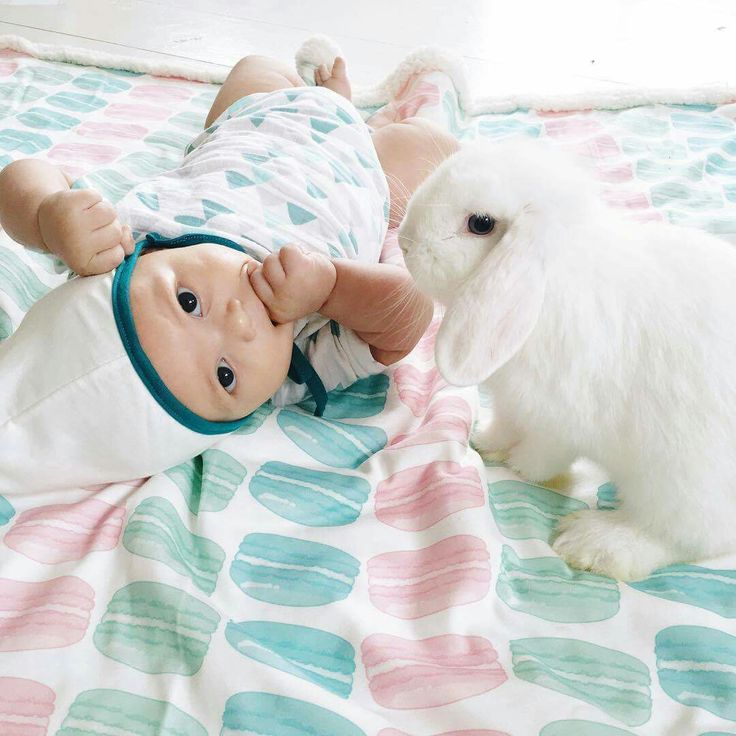 Provide a soft nest area in a box with clean towels, and cover the babies (if eyes are closed) so it is dark.
Provide a soft nest area in a box with clean towels, and cover the babies (if eyes are closed) so it is dark.
DO NOT provide extra heat if the room temperature is at least 65 to 70F because excessive heat can be fatal. If the room is much cooler, then you may place a heating pad on a low setting under no more than HALF of the nest so the bunny can move to a cooler area if it gets too warm.
For a wild bunny, you need to get him to a wildlife rehabilitator if he is TRULY orphaned (mom was killed). Remember with wild bunnies, the mom ONLY comes back at night to call and feed him; please put him back for her if just found and healthy. With domestics, the mom only feeds once or twice a day for only 5 minutes. Leave babies with the mom. For wild orphans, first google your state and wildlife rehabber, and call your humane society, also try http://www.humanesociety.org/animals/resources/tips/find-a-wildlife-rehabilitator.html and http://www.owra.org/find-a-wildlife-rehabilitatoror as it is illegal in most states to keep a wild animal, and they really need a professional as this is critical. Local rabbit veterinarians or humane societies may also know of a rehab facility.
Local rabbit veterinarians or humane societies may also know of a rehab facility.
The following is a guideline for the daily amount to feed a TRULY orphaned bunny (mother was killed, etc.) that will be about 5 lbs as an adult. It is impossible on the internet to be exact. Please find rehabber.
GENERAL FEEDING OF ORPHANS
Age + Amount (This WILL vary depending on type of rabbit.) Use KMR (Kitten Milk Replacer) for domestics and Meyenberg Goat Milk, regular not low fat for wild ones,or KMR. Add a pinch of acidophilus (AKA Probiotic capsules) to all formula to promote healthy gut flora. Other formulas vary depending on the region of the country. Avoid using Esbilac or any puppy formulas or cow’s milk. Do not add Karo syrup. FEED TWICE A DAY ONLY unless baby is low weight, than three times.
Newborn to One Week: 2 – 2+1/2 cc/ml each feeding (two feedings).
1-2 weeks: 5-7 cc/ml each feeding (two feedings).
(depending on bunny.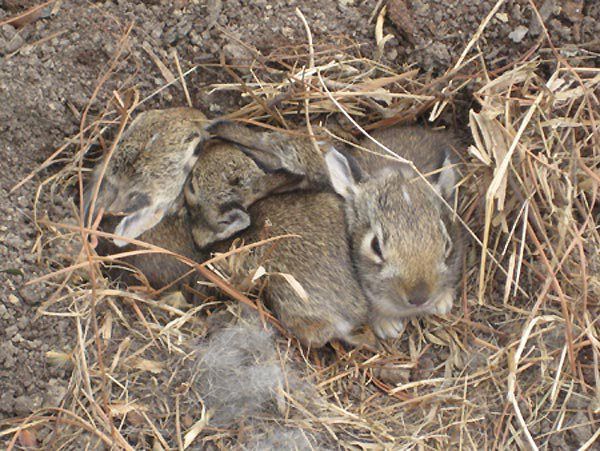 .may be much LESS if smaller rabbit).
.may be much LESS if smaller rabbit).
2-3 weeks: 7-13 cc/ml each feeding (two feedings). Bunnies whose eyes are still CLOSED need to be stimulated to urinate and defecate before or after each feeding. Again, seek a professional on this. Domestic eyes open at about 10 days of age. Then start introducing them to timothy and oat hay, pellets and water (always add fresh greens for wild ones–dandelion greens, parsley, carrot tops, grated carrots, all fresh, watered down). See below for detail.
3-6 weeks: 13-15 cc/ml each feeding (two feedings–again, may be LESS depending on size of rabbit! A cottontail will take so much LESS–about half of this!.)
Domestics are weaned about 6 weeks. Cottontails wean and release about 3-4 weeks and jackrabbits much later (9+ weeks). Feed only twice a day up to these TOTAL amounts. You may find an eyedropper or syringe easiest to use. Feed them upright, and go slowly watching them lick and swallow so they do not aspirate. For domestic rabbits, if you have a healthy adult rabbit at home and you can collect cecotropes (the soft chain-like droppings that the rabbit usually eats) then these can be mixed with the KMR or goat milk to give the baby bunny normal bacteria for its intestinal tract. Only one cecotrope per day for 4-5 days is needed. This is particularly important for rabbits under one week of age. Acidophilus capsules for humans, opened and sprinkled some in formula, works well too.
For domestic rabbits, if you have a healthy adult rabbit at home and you can collect cecotropes (the soft chain-like droppings that the rabbit usually eats) then these can be mixed with the KMR or goat milk to give the baby bunny normal bacteria for its intestinal tract. Only one cecotrope per day for 4-5 days is needed. This is particularly important for rabbits under one week of age. Acidophilus capsules for humans, opened and sprinkled some in formula, works well too.
After each feeding it is important to make the bunny defecate and urinate (until their eyes are open) to keep the intestinal tract and urinary system running smoothly. Use a cotton ball moistened with warm water and gently stroke the anal area until the bunny starts producing stool and urine and keep stroking until the bunny stops. You are reproducing the behavior of the mother rabbit who would lick her young to stimulate them to go to the bathroom and to keep the nest clean. No need to do this for jackrabbits or if bunny’s eyes are open.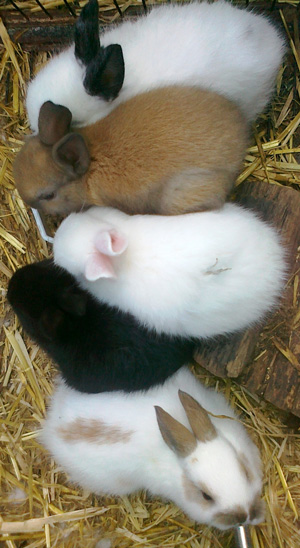
As soon as their eyes are open, you may introduce the bunnies to hay, such as oat and timothy hay, some alfalfa, and pellets, and for wild ones, add dark leafy veggies such as dandelion greens, carrot tops, parsley, grated carrots, etc. Keep the greens fresh, moist, and stand them up in a heavy mug of water. Change greens often. If this is a wild rabbit, you do not need to introduce pellets. If this is a domestic rabbit baby, then you may introduce plain alfalfa pellets at 2 weeks of age (please refer to the handout Care of Rabbits for more information on diet). Wild rabbits should be released as soon as they are eating hay and greens and are approximately 5 inches in body length (for cottontails) and are afraid of you (about 3-4 weeks). Jackrabbits are released much later (9 weeks up). They will be small, but the longer you keep them, the more agitated and difficult to handle they will become, and the less likely their chances for survival in the wild. They may be easily injured in your care as they attempt to get free. For wild bunnies, please do not raise them yourself, but take them to a rehabber! Google your state and wildlife rehabber or see links above.
For wild bunnies, please do not raise them yourself, but take them to a rehabber! Google your state and wildlife rehabber or see links above.
Modified from an original document from :
Midwest Bird & Exotic Animal Hospital
milk substitutes, supplements, newborn care
Sometimes it happens that young rabbits, barely born, are left without mother's milk and care. Then these worries fall on the shoulders of a person. Feeding rabbits without a rabbit is a serious and responsible matter, because the life of babies depends on the speed of decision-making and subsequent actions.
Why are baby rabbits left without mother's milk and care? What is the danger?
The farmer decides to artificially feed for one of the following reasons:
- as soon as she has calved, the female refuses the young rabbits and abandons them;
- the female rabbit has no milk or has developed mastitis;
- the female is in a very serious condition after birth or she has died;
- other nurse does not accept babies.
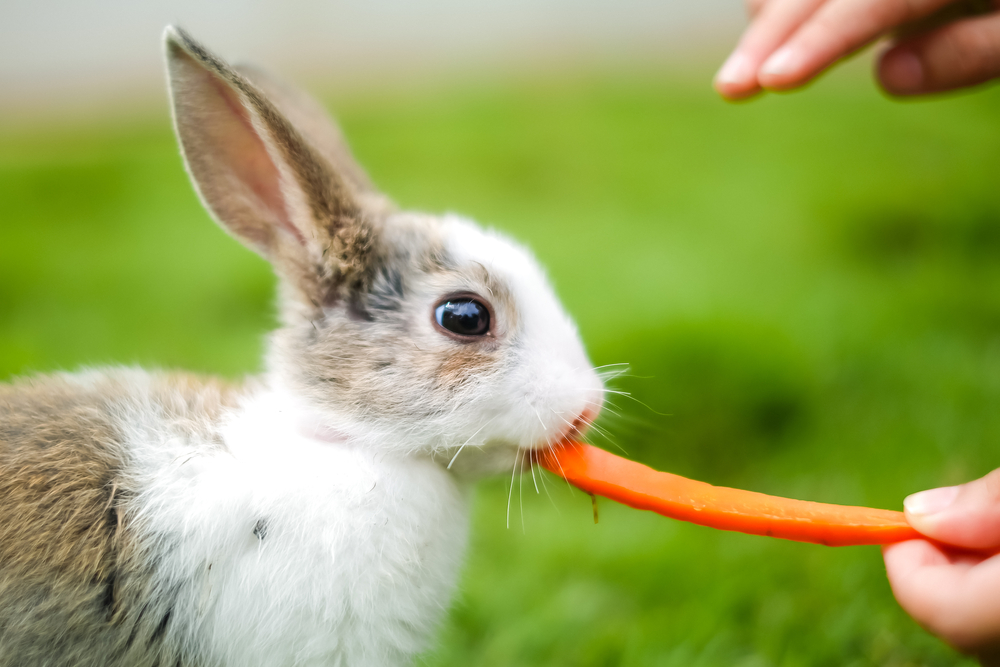
It is especially dangerous for young rabbits when the female dies without having time to feed them with valuable colostrum for the first time. It contains antibodies necessary for babies, which contribute to the development of their own immunity.
Human care and care will not replace mother's cubs, and incorrect actions on the part of breeders increase the mortality rate.
Ornamental rabbits are less likely to survive, and meat breeds, even when bottle-fed, grow up to be healthy, strong individuals.
What to try before artificial feeding?
The purpose of artificial feeding is not only to ensure the satiety of rabbits, but to provide comprehensive care for offspring. Please try the following alternatives before you begin your duties:
- Find a wet nurse. This course of events is possible if the breeder has several queens. You can’t just plant baby rabbits with another lactating female. There is practically no chance that she will accept someone else's offspring.

Therefore, remove the rabbit for half an hour in another cage, and wipe the babies with fluff and straw from her dwelling. The nurse will return to the cage and will probably take on new wards. - Awaken the parental instinct. Most often, it is after the first birth that a mother does not want to feed her babies. Try to solve this problem by simply holding the rabbit during several feedings.
With a favorable outcome, feeding on mother's milk, the rabbits will quickly get stronger and begin to gain weight. But it happens that these tips do not help.
How to properly feed baby rabbits for the first 30 days?
Baby rabbits are born completely blind, without wool. The first fluff on the body begins to grow on the 6th day, and the opening of the eyes occurs on the 10th day. Newborns weigh 60-90 g, but with comprehensive care and good nutrition, they quickly gain weight and grow.
The farmer should prepare for artificial feeding of the offspring - master the skills of care and purchase equipment.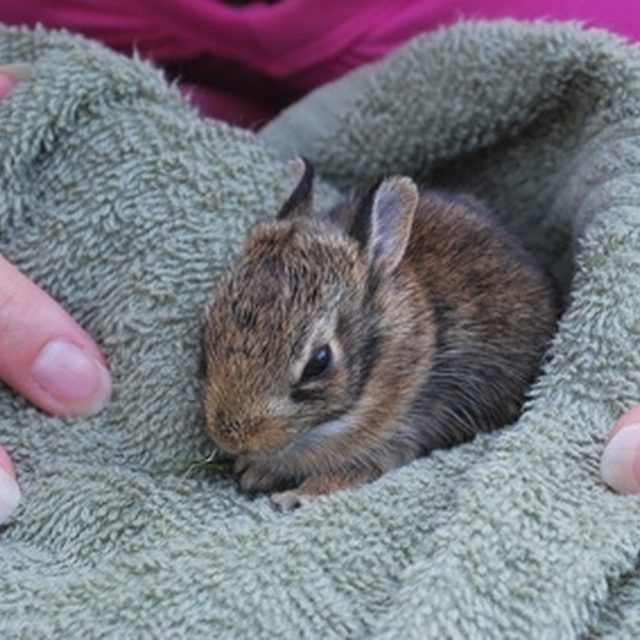
Tools
Baby rabbits require teats and containers.
Buy Animal Feeding Kit from the shop. It includes a special syringe with rubber nozzles of various shapes and sizes. Such a set is sold in the form of a bottle with several special nipples.
You can get by with improvised means:
- Use the syringe and the pipette rubber cap to feed, poke a few small holes in it.
- eye drop bottle is suitable for the procedure. For convenience, use it together with a pipette tip.
- Small baby bottle is useful for older animals.
The process of artificial feeding should be as close as possible to natural.
Before opening their eyes, the reaction of rabbits to teat substitutes is weak. When pouring milk into the mouth, be careful and do not rush, otherwise the rabbit may choke or choke.
Milk replacers
Newborn baby rabbits require good quality nutrition. Rabbit milk substitutes include:
Rabbit milk substitutes include:
- Goat milk. The best option for artificial feeding of rabbits. There is no need to dilute or add anything, because the composition is similar to rabbit milk, only slightly inferior to it in fat content.
- Cow's milk. The most affordable and common alternative to rabbit milk. In its pure form, it cannot be fed to babies, because it lacks carbohydrates in its composition. Mix cow's milk with condensed milk in a ratio of 3:1. Heat the mixture for 40-60 minutes. at a temperature of 70. Before feeding, cool to 37 degrees.
- Special blends. Sold in pet stores and veterinary pharmacies in a large assortment. Buy milk substitutes designed for rabbits or dogs. In a pinch, suitable food for cats. In terms of components, their composition is as similar as possible to rabbit milk.
- Infant formula . Such food is suitable for rabbits if it contains a minimum of sugar and additives.
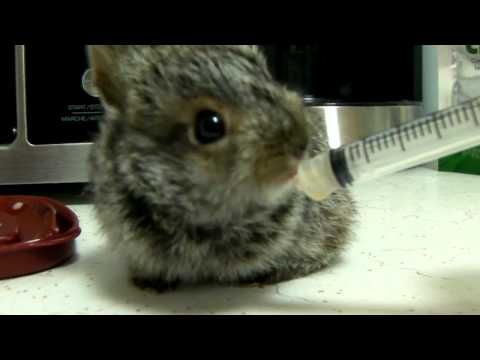
In the presented video you can see the principle of artificial feeding of rabbits:
Thus, the most suitable food for newborn rabbits is special dry mixes, and cow's milk is the least preferred option.
Feeding procedure
During the procedure, hold the animals upright, firmly, but without crushing. At first, rabbits may not respond to simulated nipples. Be patient.
Gently moisten your baby's mouth with milk, he will lick it off himself. Repeat several times. This will stimulate the sucking reflex.
During the feeding procedure, be careful not to get liquid into the animal's respiratory tract. This is fraught with the death of the rabbit.
Make sure that the tummy does not overflow, because babies themselves can not yet determine the level of their satiety.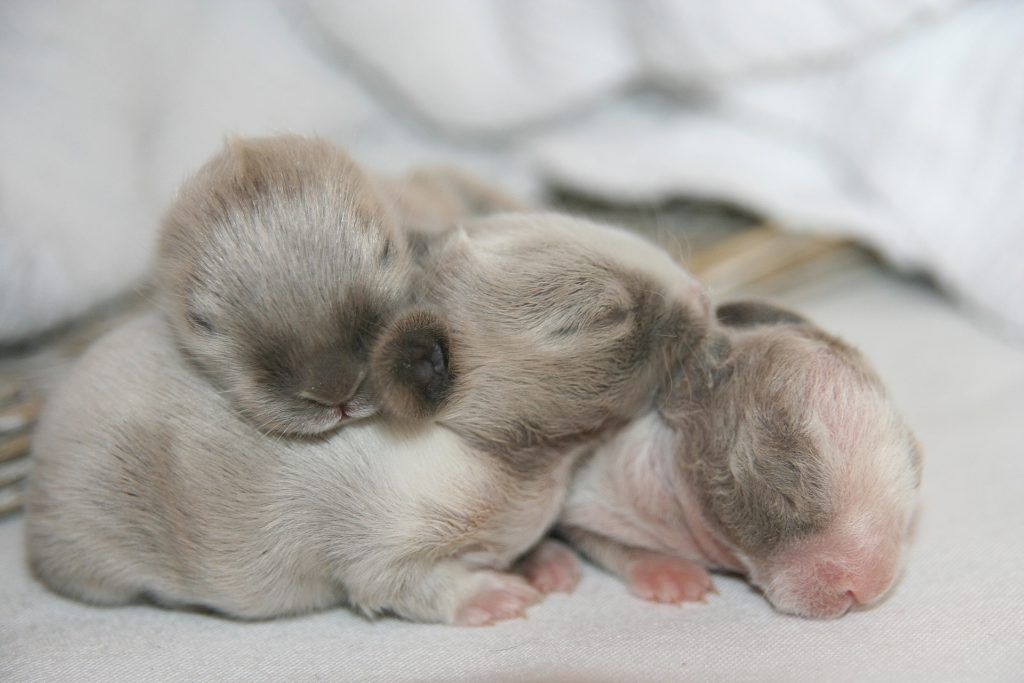 Overeating causes indigestion and related problems.
Overeating causes indigestion and related problems.
Feeding liquid should be 37 degrees. Store milk for up to 3 days in the refrigerator, and always use freshly prepared formula for feeding.
Adjust the diet according to the needs of the cubs. Well-fed babies sleep quietly, and hungry babies squeak and actively look for a source of food.
Dosage and frequency
The amount of mixture and the frequency of feeding are directly dependent on the age of the rabbits.
The female feeds the young rabbits 1-3 times a day. Her milk is very nutritious, so many feeding sessions are enough for rabbits for proper development, growth and weight gain.
But no mixture can replace rabbit milk, so bottle-fed babies are fed up to 6 times a day.
In the first 2 days, the rabbits need a few drops of food per dose, even 1 ml of the mixture is too much for them.
Gradually, the amount of milk needed for the development of the cubs increases, and the number of feedings decreases.
Artificial feeding by age
Organizing artificial feeding is a responsible business. You need to be extremely careful when choosing a diet for rabbits, depending on their age and physical health. After all, errors in the quantity and quality of the diet adversely affect the cubs.
From birth to 5 days
A newborn baby rabbit needs 1 drop of nutrient fluid. For the first day they feed 5-6 times. Since babies have not yet learned to swallow on their own, care must be taken.
On the second day, 4-5 meals are enough. On the 5th day - 4 feedings. The daily norm of milk is 5-6 ml. By the end of this period, rabbits with normal development double their weight.
From 6 to 14 days
Animals grow up and the amount of nutrient mixture per feeding increases. They drink 7-10 ml of milk per day. The number of feedings remains the same, or decreases to 3. The weight of the rabbits reaches 250 g.
From the 15th to the 30th day
From the 15th day the animals are transferred to two meals a day.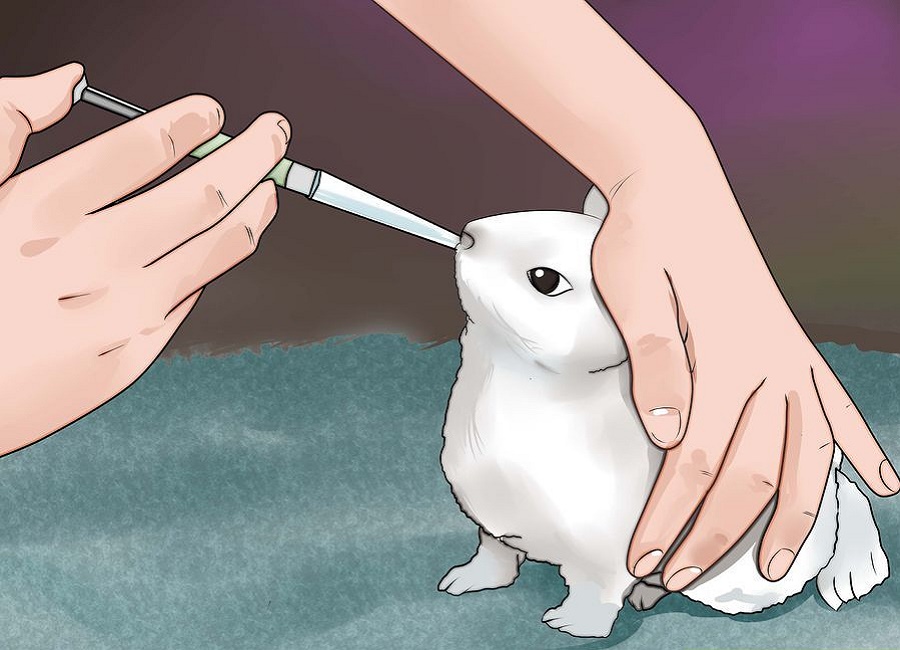 In the first 2-3 days, observe the behavior of the young and, if signs of hunger are present, supplement them with a small amount of formula in the 3rd feeding.
In the first 2-3 days, observe the behavior of the young and, if signs of hunger are present, supplement them with a small amount of formula in the 3rd feeding.
The amount of the mixture per day by the end of the month reaches 60 ml. While this is their main food. Weaning from the nipple should be on the 20-25th day.
The readiness for the introduction of complementary foods is determined by the condition of the teeth. If the molars have replaced the milk teeth, then solid food can be gradually introduced and taught to drink from a saucer.
Weight of animals by the end of the period reaches approximately 500 g.
Starting from the third week, put small piles of dry grass in the cage - this will prepare the rabbits for solid food.
At this time, it is important to monitor the change in the baby's stool. Remove hay from the diet immediately if diarrhea occurs. If adaptation to new food goes without problems, then add a small amount of compound feed, grass, carrots.
Remove hay from the diet immediately if diarrhea occurs. If adaptation to new food goes without problems, then add a small amount of compound feed, grass, carrots.
From the 31st day, if there is no shortage in weight, milk is gradually removed from the diet of rabbits. When the offspring are 45 days old, their diet completely switches to an adult.
Vitamin A and Vitamin D
In nature, baby rabbits get their vitamins and minerals from their mother's milk and then from a varied adult diet. Artificially fed individuals need more vitamin supplements.
If the body lacks vitamin A , then rabbits suffer from a runny nose and dry eyes. This vitamin is responsible for the desire to reproduce and have healthy offspring, as well as the healthy functioning of the nervous system. Its sources are: beet tops, carrots, cabbage leaves, young grass, etc.
Vitamin D is responsible for bone formation. With its lack, growth retardation and various deformities of the limbs and spine are possible.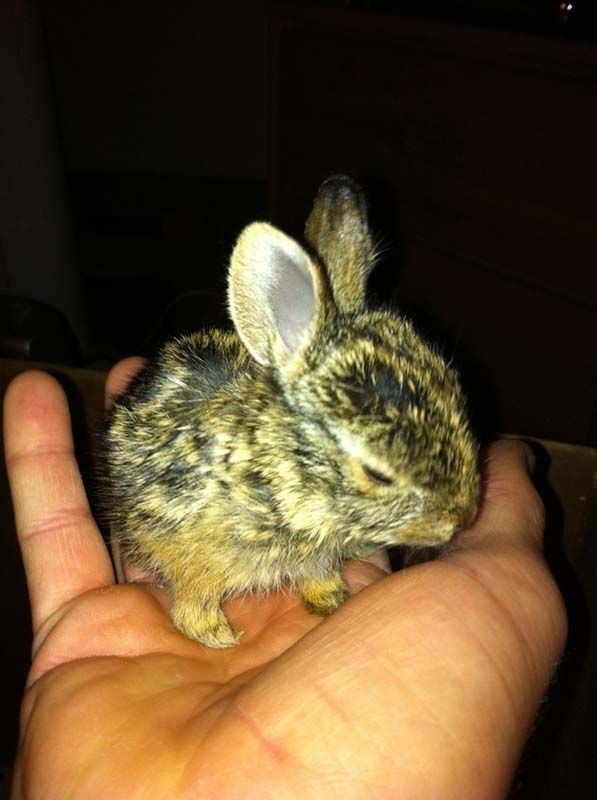 Vitamin D is produced by the body itself under the influence of sunlight. This will help bone meal, fish oil, milk. Feed food in places where the sun's rays do not have access, because under their influence vitamin D is destroyed.
Vitamin D is produced by the body itself under the influence of sunlight. This will help bone meal, fish oil, milk. Feed food in places where the sun's rays do not have access, because under their influence vitamin D is destroyed.
Oatmeal and oat sprouts
Oats are a fundamental cereal in rabbit nutrition, containing a storehouse of vitamins and microelements. Its calorie content is 336 kcal/100 g. It can take up to 50% of the total mass of feed. Rabbits on such feed gain weight well, but oats do not cause obesity.
This cereal is introduced into the diet of rabbits as soon as they begin to feed on their own. First, they are fed with oatmeal or crushed grain, and later they switch to feeding with whole grains.
Animals eat such food with pleasure up to 5 times a day, and adults - 3 times a day.
Oat seedlings have a good effect on the reproductive system of rabbits. For mating, it is introduced into the diet of both males and rabbits. Oats help lactating females recover after birth and stimulate the production of nutritious milk.
Useful substances, which are rich in germinated oats, have a beneficial effect on the gastrointestinal tract of animals. Appetite increases, fur becomes beautiful and shiny, body weight grows.
Be sure to include a water bottle in the cage if the rabbits diet is dominated by dry cereal food.
Bone meal and chalk
Bone meal is a powder from the bones of animals and birds, the most valuable source of calcium, phosphorus, fluorine, zinc, iron, protein and other micro and macro elements.
By introducing it into complementary foods, the likelihood of diseases associated with the musculoskeletal system in rabbits is significantly reduced. Thanks to proteins, the muscle mass of animals grows faster.
The doses indicated on the packaging of bone meal must be strictly observed. An overdose is even more dangerous than the problems associated with the absence of this bait:
- The stomach of rabbits becomes clogged with a jelly-like mass, because of which the animals often die.

- Females become aggressive, lose the ability to reproduce.
- There are cases of cannibalism among individuals.
If the beginnings of these problems appear, reduce portions or remove flour from the diet.
Chalk is a safe mineral supplement providing calcium to the body. It can be used in powder form, in lump form and in mineral briquettes. Chalk is useful for the prevention of diseases of bone tissue.
Branches and acorns
Branches of trees and bushes are used not only as food. Some are useful for the prevention of ailments.
So, for example, walnut branches remove parasites from the body, linden and willow - work as an anesthetic, birch - as a diuretic. Give them to rabbits infrequently, as needed.
Trees and shrubs whose branches can be used as permanent feeding include: .
Trees whose branches can be given to rabbits occasionally :
- Pear, rowan, oak, chestnut.

- Pine, juniper.
Do not use branches of bird cherry, lilac, elder, rosemary in the diet.
Another nutritious food for rabbits is acorns. You can feed them both green and dry. The norm of acorns per day for an adult is 50 g.
Introduce them into the diet gradually - first in the form of flour, as an additive to the main grain feed, and then as an independent complementary food. Rabbits love to chew on them.
For more information, read our article on how, when and what to feed rabbits.
Edible salt
Table salt is used not only as a seasoning. Chlorine ions contribute to the production of hydrochloric acid in the composition of gastric juice, and sodium ions are responsible for the transmission of nerve impulses.
Rabbits gnaw on the wooden partitions in the cage due to salt deficiency. This indicates such problems:
- violation of metabolic processes;
- decrease in offspring productivity, increase in the number of miscarriages;
- slow growth of newborn animals;
- diseases of the gastrointestinal tract;
- water-salt imbalance and diseases associated with blood formation.

Edible salt is given together with chalk. For this, mineral briquettes are prepared. The following components are required:
- 500 g feed chalk;
- 500 g red clay flour;
- 300 g ground hardwood charcoal flour;
- 5 st. l. salt;
- 3 st. l. fodder sulfur.
Mix ingredients with water until a thick dough is obtained. From it, fashion shapes the size of a matchbox. String them on the wire. Dry first in the shade and then in the sun. Fire it like clay in a kiln.
Place one in each rabbit cage. They themselves will learn to gnaw a briquette in the amount that their body requires.
Acidophilus
Rabbits are not distinguished by good health, the gastrointestinal tract is their weak point. Gastrointestinal stasis is often found in these animals, when the stomach stops working and the individual dies.
Acidophilus is a complex of beneficial lactobacilli. It helps digest food in the large intestine and protects against harmful bacteria that can lead to bloating, diarrhea, and other problems.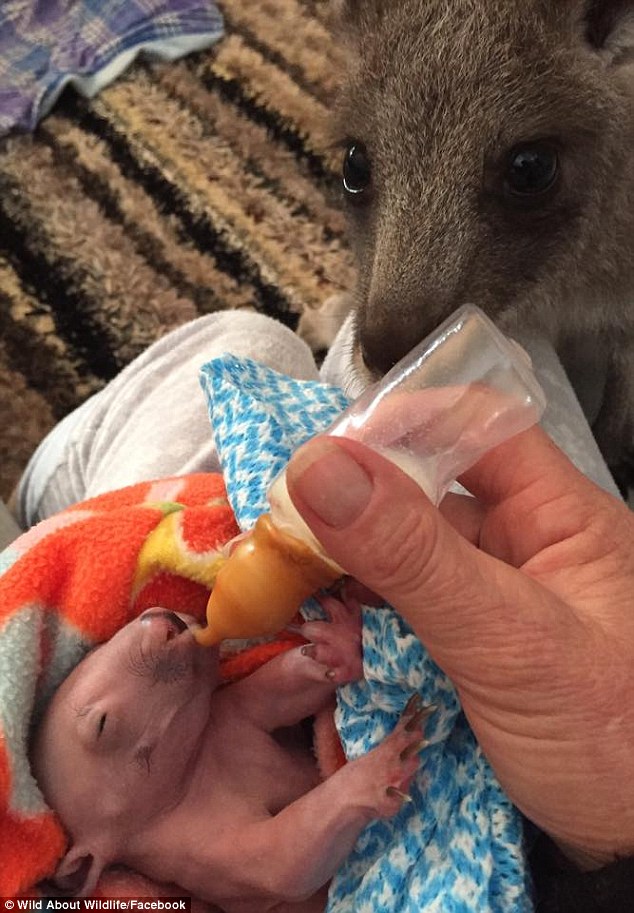
This drug will also help when taking antibiotics, when the entire intestinal microflora is destroyed.
Caecotrophs are the primary feces of the rabbit. It has an oblong shape, often reminiscent of a bunch of grapes due to sticky spools. The color varies from light green to black. The smell is unpleasant, sour.
This feces is formed in a special compartment of the caecum, which is found only in lagomorphs. Therefore, do not confuse caecotrophs with ordinary feces.
Usually rabbits eat caecotrophs from the age of 20 days as soon as they leave the body. In this way, they re-absorb vitamins and minerals. Without this, the animals would suffer from beriberi.
If there are too many caecotrophs, the animal does not eat them, then you are overfeeding the rabbit with cereals. Remove grains from the diet for a couple of days, leaving water, branches and hay.
The second reason may be worms. Get rid of the parasites and everything will be back to normal.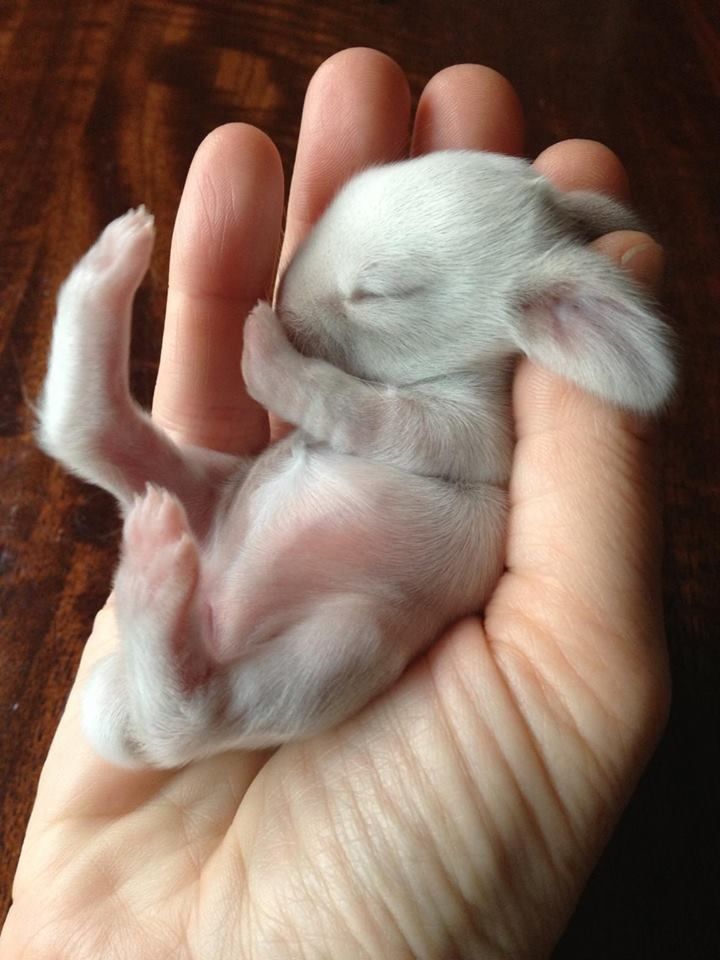
Artificial feeding of rabbits has its positive and negative aspects.
The benefits include:
- Getting used to milk substitutes, rabbits are undemanding to eat.
- Good appetite leads to weight gain and growth of individuals.
- The diet is adjusted to the person and his capabilities.
Disadvantages of artificial feeding:
- Nutritional value, composition of vitamins and minerals in substitutes is much lower than in natural rabbit milk.
- Inability to transfer antibodies, which means weakened immunity of the offspring.
- Difficulty in nipple training.
- Baby rabbit may be injured while feeding.
- The constant presence of a person next to the kids for care and attention.
Baby rabbit care
The earlier the baby rabbits were left without a queen, the more complex care they need. The conditions of detention and the feeding regime require a great responsibility and dedication from a person.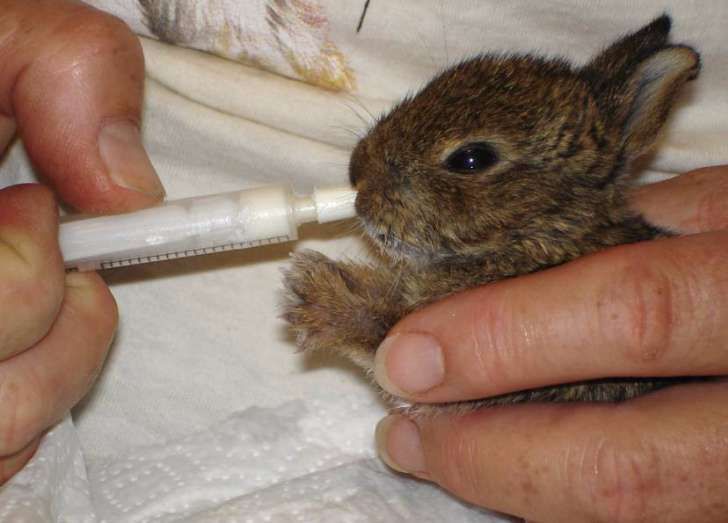
Lighting and heat
Newborn rabbits require special care, attention should be paid to lighting and heat when rearing babies.
There must be a place in the cage where the sun's rays do not reach. Direct solar radiation is dangerous for animals. Daytime lighting should be dimmed, and it is recommended to turn off the lights at night.
Keep the rabbits warm. To do this, build a nest from the fluff of adult rabbits or put a heating pad in the cage. The optimum temperature is considered to be when a person’s hand is comfortable, and not hot.
Hygiene
Cleanliness in the care of rabbits is essential, because without immunity they are more susceptible to germs and bacteria.
Boil utensils and teats before use. Prepare the mixture before feeding, according to the instructions. Store milk in the refrigerator for up to 3 days.
Before feeding, wash your hands with fragrance-free soap and dry with a towel. After feeding, clean the babies from the remnants of food and bowel movements.
Abdominal massage
Bowel and bladder emptying requires special attention, because babies do not know how to cope with it.
Before feeding, the female licks the baby rabbit, pressing on the stomach with her tongue, moving from the navel to the hind legs. Thus, it causes the intestines and bladder to empty.
A person who substitutes a mother for rabbits should not forget about this procedure. Otherwise, the bladder will burst.
Before each feeding, massage the baby's belly with a damp soft cloth or piece of cotton.
This manipulation is completed when the offspring are more than 14 days old.
In healthy rabbits, the belly is elastic and slightly convex. If it is sunken, then this is a sign of gastrointestinal problems.
In the video below, the breeder demonstrates how to massage the belly of a rabbit before feeding:
Caring for orphaned rabbits requires a lot of strength, skills and patience from a person. Only in this way will they survive and grow into beautiful healthy individuals.
Publication author
How to water baby rabbits | Fermer.Ru - Farmer.Ru - Main farm portal
Go to full version/Return
Published on Wed, 12.08.2009 - 19:41 by Farmer. Articles
Nadezhda Ilyinichna Lepko, a resident of Rovenka, bought a white giant rabbit from an experienced rabbit breeder. However, the joy of the acquisition was premature. Ahead of the novice rabbit breeder, disappointment was expected.
The rabbit was sold to a female rabbit, she weighed 7 kg. It remained to wait for the offspring. Before the round, the hostess and her husband were on duty at the rabbitry in turn, so as not to miss an important moment.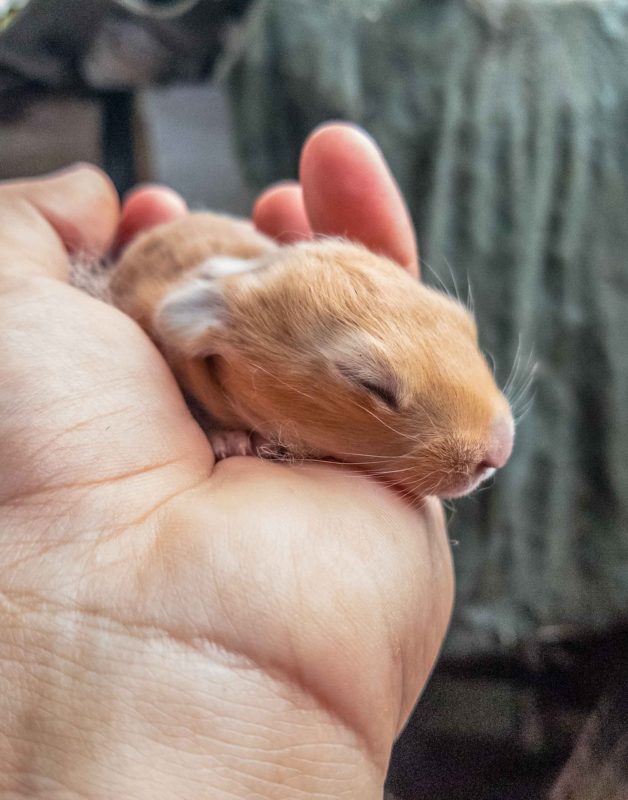 There were already frosts at night and newborn rabbits could die from the cold. After 5 days, when the mother liquor was placed, 4 frozen baby rabbits and some kind of "shapeless piece" were found on the grid in the cage. The former owner of the rabbit said that they did not see it, and the piece is probably the last.
There were already frosts at night and newborn rabbits could die from the cold. After 5 days, when the mother liquor was placed, 4 frozen baby rabbits and some kind of "shapeless piece" were found on the grid in the cage. The former owner of the rabbit said that they did not see it, and the piece is probably the last.
What happened was not accidental. Despite the fact that the rabbit was a motherfucker, she weighed more than she should. Usually females of this breed weigh 5-5.5 kg. And the weight of 7 kg can have either very old females or a loose constitution. Both those and others are undesirable for receiving rounds. Old rabbits, as a rule, bring unviable, weak offspring. They suffer from reduced milk production, and they have poor maternal qualities. The same shortcomings are in rabbits of a loose constitution, and, moreover, heavy and obese. And hence all the bad consequences. This is confirmed by the low fecundity of the purchased rabbit (4 rabbits), while the usual fecundity of females of the white giant breed is 9-10 rabbits.
In a healthy, normal birth, the female eats her afterbirth. And the "bloody piece" found in the nest, and the rabbits scattered over the net, indicate that this female had a birth with deviations, and, therefore, she could not save her offspring. Okrol in obese females is very difficult and in most cases unfavorable.
Moreover, such heavy rabbits often suffer from paw disease - pododermatitis and breast disease - mastitis. With these diseases, rabbits try to get rid of their offspring.
Thus, the females from which they wish to obtain offspring must be of average fatness and not obese, as well as sufficiently strong and healthy. Unfortunately, it is almost impossible to restore the functions lost during obesity. Defects are repeated in subsequent rounds. This phenomenon was observed by N.I. Lepko at his rabbit in the second round. She writes: “They let the rabbit go to the rabbit, and on the 34th day we heard a squeak in the mother liquor. I washed my hands, fenced off the rabbit, checked the nest with my hand through the lid. All the rabbits were alive, I gathered them in one place, covered them with fluff. Then let the rabbit in the cage. She checked the nest and covered the entrance to the mother cell with hay. I thought that everything was in order. The next morning we saw a terrible picture: our giantess was sitting and eating the rabbit! They took the mother cell from the cage and I ran to seek advice. that one rabbit breeder immediately killed such a mother, and put the rabbits to other females. Nobody knew how to feed the babies and what to do. We have one rabbit!"
All the rabbits were alive, I gathered them in one place, covered them with fluff. Then let the rabbit in the cage. She checked the nest and covered the entrance to the mother cell with hay. I thought that everything was in order. The next morning we saw a terrible picture: our giantess was sitting and eating the rabbit! They took the mother cell from the cage and I ran to seek advice. that one rabbit breeder immediately killed such a mother, and put the rabbits to other females. Nobody knew how to feed the babies and what to do. We have one rabbit!"
It is difficult to restore reproductive abilities in old and especially obese rabbits, even if their feeding is normalized. In these animals, the metabolism in the body is often disturbed, which leads to bad things, in particular, to the manifestation of cannibalism (eating offspring) or the loss of milk production functions, etc. Apparently, just such a phenomenon was observed in the rabbit of the Lepko family.
It should be noted, however, that cannibalism in rabbits can also occur for other reasons. First of all, this defect is inherited. But very often it manifests itself as a result of a lack of minerals in the feed and the body, or because there is no water for drinking in the cage; during and after the birth, the rabbits drink especially a lot.
First of all, this defect is inherited. But very often it manifests itself as a result of a lack of minerals in the feed and the body, or because there is no water for drinking in the cage; during and after the birth, the rabbits drink especially a lot.
And one more thing, because of which the female could gnaw on the young rabbits, this is the wrong inspection of the nest by the rabbit breeder. The fact is that rabbits have an exceptional sense of smell. They are very jealous of foreign odors, especially in the nest. Inspection of the nest in the first days after birth requires special technology. The hands of the rabbit breeder inspecting the nest must be clean and free of foreign odors (nicotine on fingers, perfume, toilet soap, etc.). To do this, before the examination, they wash their hands with simple laundry soap, then stroke the rabbit several times, and only after that, having removed it from the nest, examine it.
Regardless of the reasons why this female rabbit did not receive full-fledged offspring within two births, she is subject to culling. In this respect, the rabbit breeder who "killed such a mother right away" was right. In practice, you won’t get from her either rabbits, which can be grown and sold for meat, or valuable breeding young animals, because descendants can inherit this unpleasant phenomenon - cannibalism.
In this respect, the rabbit breeder who "killed such a mother right away" was right. In practice, you won’t get from her either rabbits, which can be grown and sold for meat, or valuable breeding young animals, because descendants can inherit this unpleasant phenomenon - cannibalism.
Rabbits from such females can be grown artificially, but when they reach a certain weight and age, they must be sold for meat.
Since rabbits have a very highly nutritious milk, different from the milk of other domestic animals, especially cows, it is considered that it is practically very difficult to artificially feed the rabbits left from their mothers. Rabbit milk contains 10-15% protein, 15-20% fat, 2% milk sugar and 2.5% minerals, of which calcium and phosphorus are especially high. However, attentive rabbit breeders, in particular Nadezhda Ilyinichna Lepko, whose letter we are discussing, took the risk of feeding rabbits artificially and even with milk from a cow.
She writes: “The husband brought the rabbit into the house, put it on its side on the table and held it, and I put the rabbits to the nipples. They fed them once a day, as it is written in the book. in the evening the second rabbit froze. We noticed that at first they dragged their hind legs and sucked poorly - they got tired quickly. One remained healthy and the second - with paralyzed legs lay in the basket of "suicide bombers", he almost did not suck that day. My husband took cow's milk "I just brought a pair, and began to fill his rabbit's mouth with a pipette. I poured a tablespoon of milk and put it in a basket, not believing that the baby would survive. The basket was placed in the sun. What a surprise it was when in the evening our rabbit was sitting in a basket .
They fed them once a day, as it is written in the book. in the evening the second rabbit froze. We noticed that at first they dragged their hind legs and sucked poorly - they got tired quickly. One remained healthy and the second - with paralyzed legs lay in the basket of "suicide bombers", he almost did not suck that day. My husband took cow's milk "I just brought a pair, and began to fill his rabbit's mouth with a pipette. I poured a tablespoon of milk and put it in a basket, not believing that the baby would survive. The basket was placed in the sun. What a surprise it was when in the evening our rabbit was sitting in a basket .
The rabbit was no longer touched, but the rabbits began to drink warm cow's milk with a pipette 2 times a day.
I want to draw your attention: it is better to take a pipette not with a thin nose (it is fragile, sharp), but with a blunt one. The rabbits quickly learned to suck milk from a pipette. I watered them until they no longer wanted to, they hid their faces.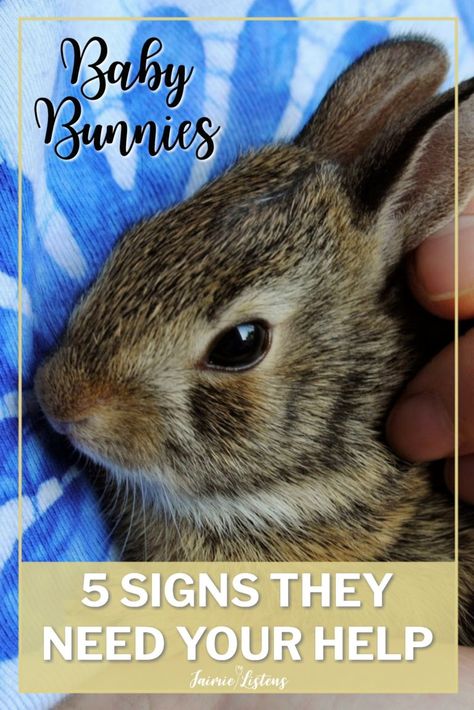 You can pour milk into the palm of your hand, and the rabbits suck the milk from the palm of your hand, and then drink from the saucer. Everyone was fed separately. On the 28th day they refused milk. The grass was laid from 2 weeks of age. Big rabbits grew up, real white giants."
You can pour milk into the palm of your hand, and the rabbits suck the milk from the palm of your hand, and then drink from the saucer. Everyone was fed separately. On the 28th day they refused milk. The grass was laid from 2 weeks of age. Big rabbits grew up, real white giants."
Cow's milk is not as rich in nutrients as rabbit's. It contains protein 3-3.5%, fat 3.2-3.7%, lactose or milk sugar 4-2.5% and 0.2% of essential minerals. However, with the right organization of artificial feeding, the desired results can be achieved. Naturally, the success of the Lepko family in artificial feeding of rabbits was due to giving fresh, freshly milked milk. And fresh milk has special properties, and the body of rabbits is accustomed to the consumption of such food and reorganized for appropriate processing.
You can feed young rabbits left without mothers at an early age using milk from a goat. It is more suitable in composition and nutritional value for rabbit milk. Good results are obtained in such situations by using condensed milk.


